

Annual Report
Melbourne Recital Centre acknowledges the Traditional Custodians of the lands on which we work, live, perform and learn. We pay our respects to the people of the Kulin Nation, their Elders past and present and to all Aboriginal and Torres Strait Islander Peoples.
Cover: Ngulmiya (July 2024)
Credit: Laura Manariti
Year at-a-glance
About Melbourne Recital Centre
Message from MRC’s Chair, Peter McMullin AM
Message from MRC’s CEO, Sandra Willis
MRC’s Vision, Values and Purpose Our Work
MRC’s Strategic Plan 2025–2028
Our Strategic Pillars MRC’s Strategic Priorities
Elevate Our Role in the Precinct
Create a Master Plan
Define Our Curatorial Strategy Support Artists and Access
Build Visitation and Audience Markets
Adapt for Sustainability and Resilience
Our Key Achievements
Creative Victoria Strategic Initiatives Alignment Our Commitment to Creative State First Peoples First For Every Victorian Whole of State Health and Wellbeing Development Report – Community Impact Community and Creative Engagement Report Our Donor Community Our Partners Organisational Structure Our Board Our Committees Our Executive Management Environmental Performance
Financial Summary
Statement of Corporate Governance
Financial Report
179,456 total atttendance
total number of performances
513
From major capital investments in our future, to collaborations with artists, organisations and festivals from across Victoria and beyond, the 2024–2025 Financial Year saw countless highlights at Melbourne Recital Centre. highlights
Jul 2024
Sold-out performances of Peter and the Wolf, presented in partnership with Museums Victoria’s Playbound Festival Melbourne Recital Centre’s Strategic Plan 2025–2028 launched
Aug 2024

ABC Melbourne’s The Friday Revue broadcast live-to-air from Elisabeth Murdoch Hall
Partnership with the Now or Never festival culminated in a contemporary dance work MOUNTAIN, and music visionaries Actress (London) and HTRK (Melbourne) collaborating in Elisabeth Murdoch Hall
First Nations curator Neil Morris presented MINYERRA, transforming the Primrose Potter Salon into an ethereal Yorta Yorta soundscape

Oct 2024
Robin Fox, founder of Melbourne Electronic Sound Studio, appointed the 2025 Artist-in-Residence
2025 Classical subscription season launched, inviting audiences to Ready Your Ears for the year ahead

Refreshed launched and embedded into MRC’s day-to-day operation
Australian Art Orchestra with a special anniversary performanc
2024 Artist-in-Residence Forever Changed
Dec



Summer of contemporary music featured sold-out performances by Rufus Wainwright, T Robin Fox and more
Jan
2025

Apr 2025
Refreshed brand experience and accessibility-focused website launched
Michael Griffiths – It’s A Sin, presented as part of Midsumma Festival, paid tribute to the Pet Shop Boys in the Primrose Potter Salon
Matthias Goerne and Daniil Trifonov captivated audiences with a performance of Schubert’s Winterreise
ARM Architecture appointed to lead the transformation of The Peter and Ruth McMullin Beacon into a new venue for performances and events, overlooking the transforming Melbourne Arts Precinct

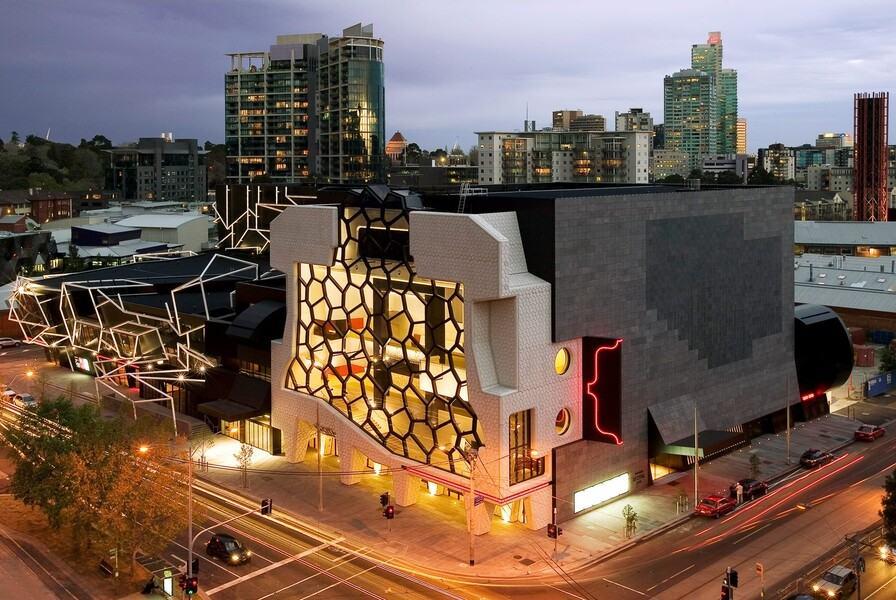

Brooklyn-based instrumentalist Claire Chase presented the Australian premiere of Liza Lim’s Sex Magic, showcasing the extraordinary contrabass flute


Daniel Lozakovich, one of the world’s most sought-after young violinists, captivated audiences with a performance of JS Bach’s Violin Partitas

Jun 2025
Welcomed the first of three technical secondments from regional performing arts centres, including Swan Hill, Geelong and Bendigo
May 2025

TINA – A Tropical Love Story, presented as part of YIRRAMBOI, transformed Elisabeth Murdoch Hall into a hub of First Nations drag cabaret
Peter McMullin AM appointed as Melbourne Recital Centre’s new Chair

RISING partnership continued, including Speak Percussion’s debut of Pigeons, a new contemporary piece supported by MRC’s ongoing Creative Development program
Iain Grandage AM announced as Melbourne Recital Centre’s new Director of Programming

About Melbourne Recital Centre
Pictured: Baroque Competition (June 2025)
Credit: Nico Keenan


Architecture of Excellence A Legacy Written in Sound

The 2007 gift from the Kantor and Calvert-Jones families enabled the establishment of Melbourne Recital Centre’s self-presented artistic program; Elisabeth Murdoch Hall is named in honour of this gift and in memory of our founding patron, the late Dame Elisabeth Murdoch AC DBE. In 2018, Lady Primrose Potter AC extended this transformative legacy; the Primrose Potter Salon bears her distinguished name.
Backed by Victoria’s vibrant music community and the Victorian Government, MRC was founded on a single truth: live music has the power to make lives better.


Peter and Ruth McMullin Beacon will join the fold.
Our spaces ensure every note resonates with crystalline clarity, creating what visitors consistently describe as an unparalleled listening experience.


A Stage for Every Story Every Experience for the Taking
Hosting hundreds of concerts and events per year, spanning classical through contemporary, Melbourne Recital Centre has become Australia’s preeminent destination for music in all its diversity. From world-class international artists to emerging local talent, our stages welcome every genre, every voice, every story.
Here, people discover connection through music, with programming that crosses boundaries of genre, age and culture. Each performance contributes to building a community united by shared musical experiences.



In the heart of Melbourne, music is more than an artform – it’s a common language that creates opportunities for belonging and celebrates the connections that bind together diverse communities.
message from Chair,MRC’sPeter McMullin AM

When I accepted the ministerial appointment to Chair Melbourne Recital Centre’s Board this year, succeeding Professor Emeritus Andrea Hull AO, I recognised and appreciated the responsibility of stewarding one of Australia’s premier cultural institutions. Transitioning from serving as Board Member to serving as Chair reinforces my commitment to ensure MRC’s continued excellence in an increasingly complex cultural landscape, as experienced this financial year.
This year of planning, transition and recalibration required us to confront external forces and challenges while reinforcing our commitment to community connection and artistic excellence. The challenges facing our creative industries demand strategic resolve and measurable impact.
Through this, MRC has continued to champion and build dynamic and diverse musical connection – serving classical enthusiasts, contemporary artists, emerging musicians, international performers, local residents and more. Our programming bridges generational, cultural and artistic boundaries, creating meaningful connections that strengthen Victoria’s cultural cohesion and build sustainable networks across our creative ecosystem.
As Melbourne Recital Centre now marks 16 years of operation, it has evolved from aspiration to achievement. This financial year’s efforts continue to steer the trajectory towards 2028 and the completion of the Melbourne Arts Precinct transformation. Leadership continuity during this time has been essential. I extend my sincere appreciation to former Chair Andrea Hull AO for her dedication and stewardship during an exceptional tenure. The Hon. Mary Delahunty retired from the Board after nine years of dedication and governance leadership. I sincerely thank Mary for her service. We welcomed new members Anthony Cavanagh, Kate Duncan and Mark Freeman to the Board; their expertise and contributions are proving invaluable.
To my fellow Board colleagues and committee members: your dedication during this period of recalibration ensures MRC remains both culturally significant and financially sustainable. Thank you.
I acknowledge and thank the Victorian Government for its ongoing support of Melbourne Recital Centre and the creative industries, and Minister for Creative Industries, the Hon. Colin Brooks MP, for his advocacy and leadership. The State Government’s critical support enables Melbourne Recital Centre to pursue excellence, creativity and connection for Victorians.
Peter McMullin AM Chair, Melbourne Recital Centre


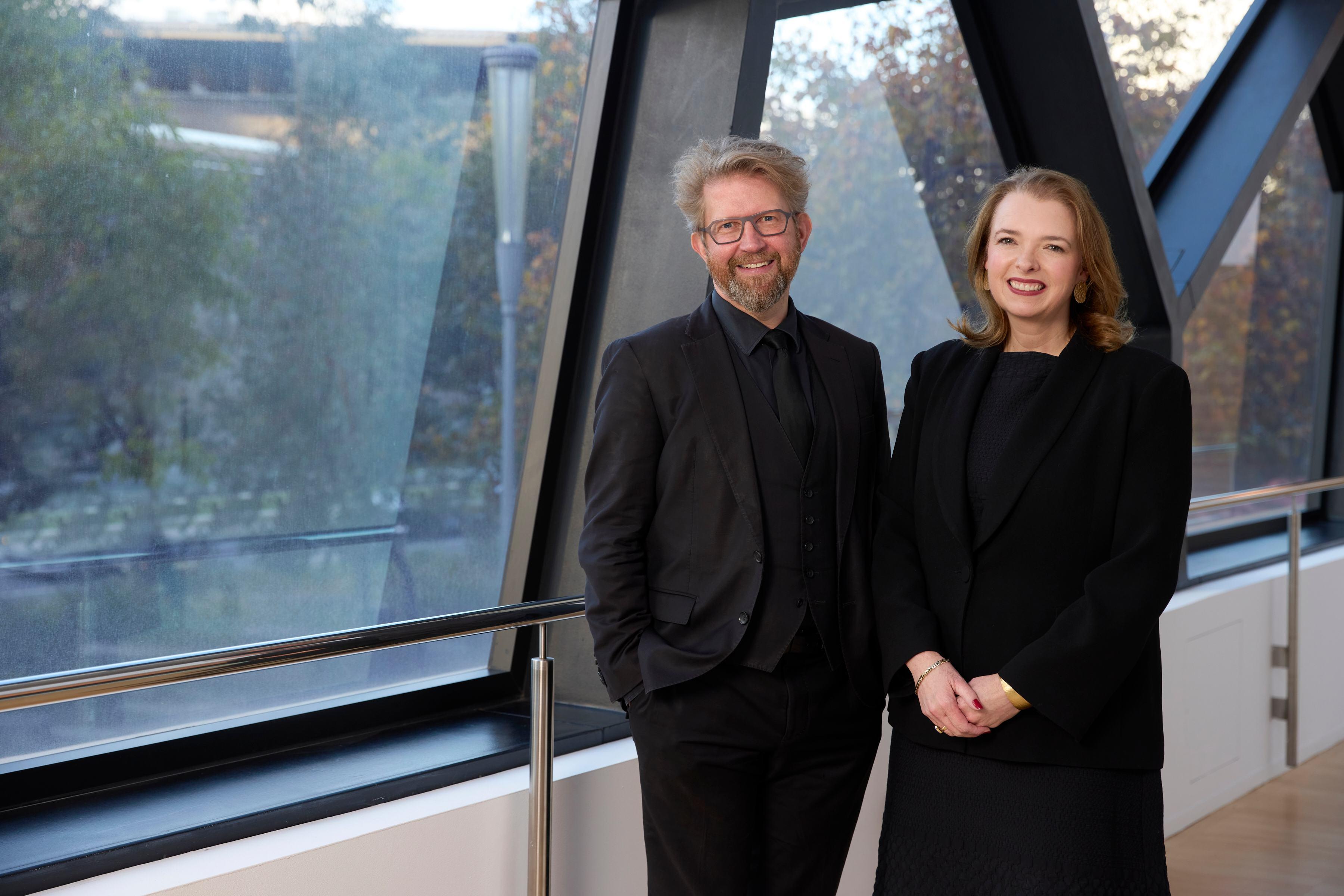
Operations team embrace this complex challenge with creativity and precision reminded us that at Melbourne Recital Centre, we don’t just present music — we make the impossible possible.
The launch of our renewed Community and Creative Engagement Plan has strengthened our connections within the community. Choir 3006 has evolved from a concept to a thriving weekly gathering of Southbank locals. Over 1000 people have experienced live music through our Share the Music program, which aims to remove barriers to access for those who need it most. Our Emerging Composer Commissions represent investments in unheard voices and stories waiting to be expressed through music.
Our partnerships with the Australian Brandenburg Orchestra, Australian Chamber Orchestra, Melbourne Chamber Orchestra, our co-presentations with ANAM supporting emerging musicians, the Melbourne International Jazz Festival, the Melbourne Symphony Orchestra’s Ears Wide Open series, the Australian String Quartet and Musica Viva Australia have provided audiences with diverse programming and exceptional artistry through their distinctive experiences on our stage.
Behind the scenes, planning for the Peter and Ruth McMullin Beacon is underway with ARM Architecture. This new space will enhance our capacity to present intimate musical programming and host events with breathtaking views of Melbourne.
of donors and supporters, the remarkable musical experiences that take place nearly every day of the year at Melbourne Recital Centre would not be possible.
Sincere thanks to the members of Melbourne Recital Centre’s Board for their thoughtful governance and strategic stewardship, navigating the balance between fiscal responsibility and artistic ambition with wisdom and commitment to MRC's sustainability. A huge thank you to the entire Melbourne Recital Centre staff, along with the extensive network of artists whose expertise and dedication ensure that our programs are delivered with skill and care. Your commitment to excellence has ensured that we remain both culturally vital and financially strong.
Finally, to our audiences — whether you're a longtime subscriber or have discovered us for the first time — your enthusiasm and response to what we do inspires our ambitions every day.
As we look toward the future, we hold fast to our purpose to amplify Australia's diverse music ecology, connect people and inspire positive change. Live music has the power to transform lives and strengthen communities. With unwavering community support, Melbourne Recital Centre will continue as the intimate heart of Victoria's musical life, where every performance reminds us of music's extraordinary capacity to move, inspire, and unite us all.
Sandra Willis CEO, Melbourne Recital Centre
MRC’s ValuesVision, and Purpose
Music is the heart and soul of what we do.
Our Vision
A thriving, creative future where music and storytelling are fundamental to our lives.
Our Purpose
We amplify Australia’s diverse music ecology to connect people and inspire positive change.
our ethos
Our Values
We are for the music lovers, the music makers and the sound creators, the administrators and the operators, who unite to make music accessible for all.
Ambition: We experiment, ideate and innovate with energy and enthusiasm.
Creativity: We are creative on and off stage to unlock new possibilities.
Collaboration: We are curious and connected, finding strength in sharing and learning.
Enrichment: We work to ensure artistic, social, financial and environmental benefits.
Inclusivity: We champion accessibility and diversity, so everyone feels welcome.
Integrity: We are honest, transparent, trustworthy, generous and kind.

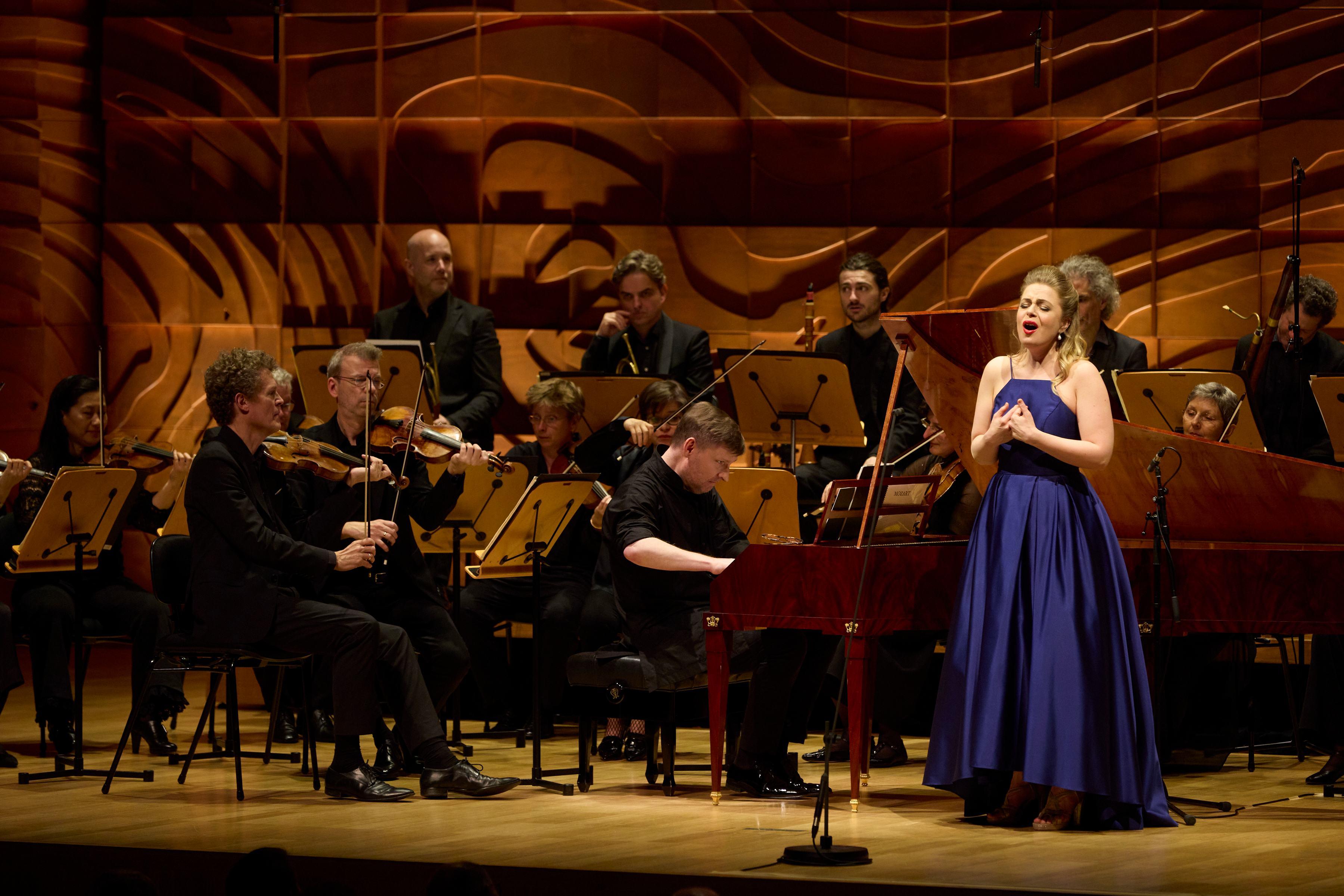
Pictured: Siobhan Stagg with Freiburg Baroque Orchestra (March 2025)
Credit: Laura Manariti



Pictured: Luke Howard x Simon Burgin (May 2025)
Credit: Laura Manariti
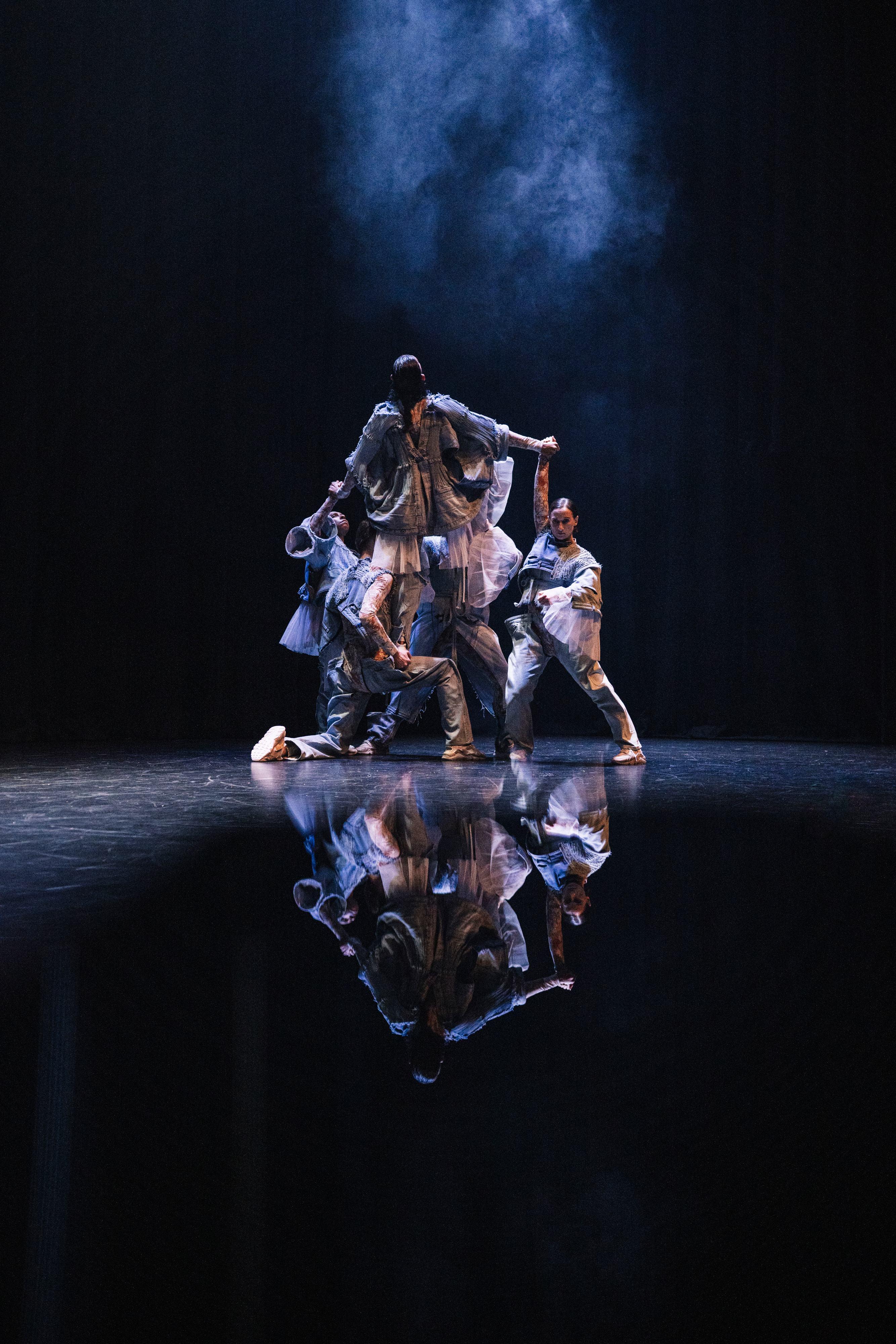
our Strategic Pillars
Place
We are a place for music on the lands of the Kulin Nation, at the heart of the Melbourne Arts Precinct.
Music
We are where music finds its stages; MRC is a world-class, specialist livemusic venue spanning the realms of classical and contemporary music.
Experience
We create experiences that resonate. We amplify opportunities for more people to come together to enjoy and discover live music and storytelling.
Connection
We build purposeful community, cultural and commercial relationships that enrich the lives of all Victorians.
People
We value our people individually and as an ensemble. We invest in our people, their growth and capabilities.
Performance
We proactively manage our business for resilience and sustainability.
MRC s Strategic Priorities
Elevate Our Role in the Precinct
Strengthened precinct leadership through ongoing collaboration with MAP Co and expanded collaborations with community, artistic, presenting and education partners including The University of Melbourne
Activated the building for Open House Melbourne, welcoming architectural, sound and design enthusiasts to discover MRC in new ways
Hosted the Amplify (formerly FReeZA) Summit with nationally renowned youth music organisation The Push, welcoming young people aged 12–25 from across metropolitan, regional and rural Victoria to connect with industry, expand networks, build skills and discover new pathways to work in the live-music sector
Create Mastera Plan
Commenced the redevelopment of The Beacon and appointed ARM Architecture to lead the project
Define Our Curatorial Strategy
Expanded our community’s creative potential with broadened artistic partnerships and innovative programming approaches, including the introduction of the Creative Development program, which subsidises access to MRC’s exceptional spaces to support artists and creators hone their craft
Strengthened programming foundations through a commissioned organisational data and insights review, which provided valuable recommendations on how to pursue business development, sustain artistic excellence and artistic breadth, and respond to the market
Build Visitation and Audience Markets Support Artists and Access
Launched a refined Community and Creative Engagement Plan, which is strategically focused on discovery pathways, deeper community engagement and multifaceted learning opportunities
Delivered targeted industry development programs, including regional training secondments, masterclasses and early childhood music sessions
Progressed organisational inclusion commitments through continued collaboration on the finalisation of our Access and Inclusion Plan and Reconciliation Action Plan
Created sustainable artist development pathways that connect emerging talent with professional opportunities through the Accelerando mentoring program
Completed a comprehensive brand redevelopment and website transformation, enhancing accessibility, discovery and revenue generation
Improved MRC s data and insights foundations, enabling increasingly proactive responses to evolving audience behaviours and market fluctuations
Launched Free Music monthly matinees, which connect musicians with other music lovers
Introduced Choir 3006, a free weekly choir, welcoming hundreds of Southbank participants to experience the power of singing and community connection
Diversified audience engagement activities, expanding pathways for cultural participation
05 04
Adapt for Sustainability and Resilience
Appointed MRC’s inaugural Chief Operating Officer, who is leading the optimisation of business operations and performance, financial strategy, governance and risk
Implemented business model reforms, strengthening operational efficiencies and fiscal discipline
Optimised the programming balance between self-presented and venue-hire modes, aligning creative, community and commercial imperatives
Expanded proactive fundraising initiatives and enhanced donor stewardship activities, including the introduction of the Chair’s Circle initiative
Our Key Achievements
Attendance at public events at the Melbourne Recital Centre*
Participation by students
All facility safety audits conducted Website (number of unique site visitors)^
Volunteer hours Melbourne Recital Centre Members
668 1,237 1 1,091,630 15,597 179,456 2024–2025 results
650 1,300 1 650,000 12,000 230,000 2024–2025 target
Report against BP3 (Budget Paper 3) measures as agreed with Creative Victoria 659 948 1 1,026,471 22,183 178,158 2023–2024 results
*Results for 2024–2025 show a slight improvement compared to 2023–2024; however, they fell short of the target. This is primarily due to a nation-wide decline in market confidence, reduced touring affordability, and lower agency risk appetite, which led to decreased activity across both our Self-Presenting and Venue Hire programs.
^In 2024–2025, the increase in website visitation was driven by the launch of our dynamic new brand and a high-performing website, making it easier and faster for visitors to browse, engage, and complete their bookings.


Pictured: Allison Russell (supplied)

Creative StrategicVictoriaInitiatives Alignment
Our Commitment to Creative State 2025
Melbourne Recital Centre aligns with Creative State 2025’s vision of a state where creative people, ideas and enterprises thrive, and where everyone has equitable access to and benefits from a rich creative culture.
We remain committed to championing and actively contributing to Victoria’s strengths and partnering with the Victorian Government to address the systemic challenges facing our creative industries, and to identify areas for future collaboration and sustainable investment.
Pictured: Ngulmiya (July 2024)
Credit: Laura Manariti


For Every Victorian First Peoples First
knowledge, practice, protocols and cultural authority will be at the heart of the creative industries, forging stronger and enduring partnerships with First Peoples’ creative communities.
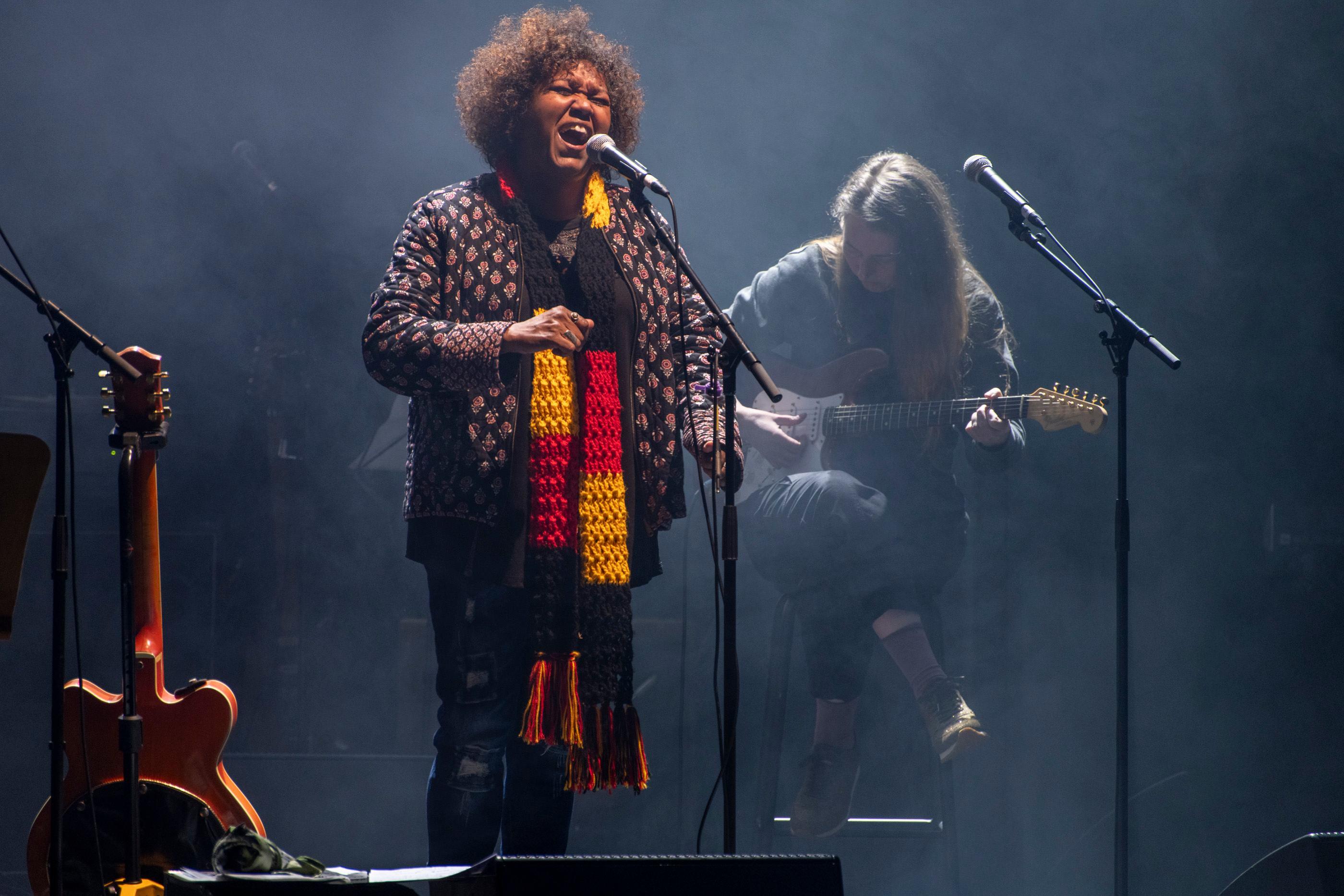
Melbourne Recital Centre demonstrated meaningful commitment to First Nations leadership through both governance and curatorial appointments. MRC appointed new Board director Anthony Cavanagh, who is a Taungurung man from Victoria. This appointment strengthens the representation of First Nations Peoples at the highest decision-making level and enhances governance frameworks and strategic direction. The appointment of Yorta Yorta, Dja Dja Wurrung, Wiradjuri, Ngurai Illum Wurrung man and creative practitioner Neil Morris as curator of Future/ Present – a transformative series platforming First Nations stories, songlines and community connections. Morris’ evocative sound experience MINYERRA transformed the Primrose Potter Salon, creating immersive journeys through woka (country), yenbena (ancestors) and mulana (spirit), using atmospheric textures and pulsing rhythmic voicings that honoured cultural protocols while engaging diverse audiences.
Our transition of the successful MobTix pilot program to a permanent accessible ticket offering exemplifies MRC’s sustainable commitment to removing barriers for First Nations Peoples, ensuring equitable access to our programming while building enduring community relationships. In partnership with YIRRAMBOI, MRC presented the sparkling First Nations drag cabaret TINA – A Tropical Love Story, a heartfelt tribute to the indomitable spirit of Tina Turner and personal story brought to life by First Nations drag performer, Miss Ellaneous (Ben Graetz).
Creative
State: Every Victorian –regardless of cultural background, age, gender identity, location, income or ability – can take up their right to participate in the cultural and creative life of the state and creative careers.
Melbourne Recital Centre’s renewed Community and Creative Engagement program represents a strategic evolution of our access initiatives, designed to deepen participants’ connections with music while fostering measurable community impact. This comprehensive approach ensures programming reaches across demographic boundaries, creating meaningful pathways for cultural participation.
Our partnerships with festivals – including Midsumma, YIRRAMBOI, RISING, Alter State and Asia TOPA – demonstrated active championing of inclusive access, participation and representation. These strategic alliances amplify Victoria’s vibrant diversity while strengthening our role as a cultural connector that transcends traditional venue boundaries, building sustainable networks that benefit multiple stakeholder groups.

Whole of State Health and Wellbeing

experiences, creative expression and rewarding and sustainable careers.
Melbourne Recital Centre actively addresses regional equity through targeted professional development opportunities, with our Regional Tech Secondments program welcoming practitioners from across regional Victoria to gain invaluable hands-on experience in our world-class venues. This initiative provides essential career pathway support while building the skilled workforce that strengthens Victoria’s creative industries.
Our Accelerando mentoring program exemplifies our commitment to nurturing talent regardless of location, with participants from Mildura through to Cann River accessing highlevel musical development opportunities, which culminated in professional debut performances in the Primrose Potter Salon. This approach ensures geographic barriers do not limit creative potential while building regional connections to Melbourne’s cultural infrastructure.
Creative State: The nature of work –and workplaces – in the creative industries have unique issues that impact the mental health and wellbeing of the people who work in them. Work to address these concerns and to foster healthy, safe and respectful working environments.
Understanding music’s profound impact on wellbeing, Melbourne Recital Centre launched Choir 3006 in February 2025. This is a new open-access weekly lunchtime choir for Southbank locals, workers and visitors. This initiative leverages the documented benefits of group singing and social connection, creating a supportive community space that prioritises mental health and creative expression.
The program’s immediate popularity and participant enthusiasm demonstrate how creative initiatives can address workplace wellbeing challenges while also building strong community connections. By providing accessible creative outlets within the working day, MRC contributes to healthier, more sustainable creative work environments across the precinct.
Development Report –Community Impact
We extend our sincere gratitude to the passionate community of donors, partners and sponsors, whose extraordinary generosity plays a vital role in bringing Melbourne Recital Centre to life. It is only through the support we receive from our community each year that we can sustain and enrich Victoria’s vibrant musical ecosystem by presenting great local and international artists, nurturing emerging Australian talent, and ensuring that the special joy of live music is accessible to everyone in our community.
In August 2024, we were honoured to acknowledge the generosity of the late Eva Besen AO and Marc Besen AC by naming our Level 2 function space The Eva and Marc Besen Suite in their honour. Eva and Marc were among MRC’s most passionate concert goers and had been coming to the MRC since it opened in 2009. Their decades-long support for a wide range of ensembles and artists who appear on our stages continues to have a profound impact on the vibrancy of Australia’s music scene.
In February 2025, our much-loved annual gala dinner saw over 100 of our most generous donors gather on the stage of Elisabeth Murdoch Hall to join us in celebrating the MRC’s sixteenth birthday, and to raise vital funds to support our suite of impactful young artist development programs. The many highlights of this memorable evening include guests enjoying a deeply moving performance by former Artist-in-Residence William Barton and being wowed by the Flinders Quartet’s energetic rendition of a new work, Perpetuum by outstanding young composer Chloe Dewhirst, an alumna of our Making Waves program for emerging composers.
This year also marked the launch of the Marshall McGuire Emerging Composer Commission. Founded in celebration of our former Director of Programming’s nearly decade-long leadership of MRC’s artistic vision, this important donor-supported initiative pays tribute to Marshall’s passionate commitment to supporting the next generation of Australian composers.
We also extend a special thank you to the generous donors of the Signature Event Circle, whose support enabled us to welcome the outstanding Freiburg Baroque Orchestra back to Elisabeth Murdoch Hall for the first time since 2020. Joined by the exceptional Australian soprano Siobhan Stagg, this year’s Signature Event was an example of our commitment to ensuring that Melbourne continues to stand as a proud peer among the world’s great musical cities.
Marking the beginning of a significant new chapter for philanthropy at Melbourne Recital Centre, in June 2025 we proudly established the Chair’s Circle as an important new initiative to acknowledge, celebrate and grow our community of major donors. Under the leadership of our new Chair, Peter McMullin AM, this circle of philanthropic leaders is dedicated to ensuring the long-term flourishing of Melbourne Recital Centre as a beacon for musical excellence.
We also gratefully acknowledge the support of our business partners: Ashurst, The Langham Melbourne, Quest Southbank, Mount Camel Ridge Estate and Port Phillip Estate. Their generosity amplifies the impact of our work and elevates the experience of Melbourne Recital Centre for our artists and audiences alike. We hope that everyone in our community will support them as they continue to support us.
Finally, to all our amazing supporters – no matter the size of your gift – thank you. We are deeply grateful for your support, and we look forward to continuing our work together to ensure an inspiring musical future for Melbourne Recital Centre and our whole community.

Community and Creative Engagement Report
Melbourne Recital Centre’s new three-year Community and Creative Engagement Plan ensures that our audiences and artists look and sound like Melbourne, in all its diversity, and positions MRC as a core contributor to industry growth for musicians, composers and technicians.
Contributing to a more inclusive society, MRC’s community and creative engagement activities make this a place where Victorians of all ages, backgrounds and abilities have the opportunity to inspire and be inspired, by taking their seat, or taking the stage.


Pictured: Robin Fox (January 2025)
Credit: Laura Manariti
Engaging Community Programs
Enriching Artist Development Opportunities



1013 people accessed live performances at MRC through the Share the Music ticket and transport subsidy program
Two Music Always tours (16 performances) brought live music to 523 people living in aged-care and assisted-living facilities across Victoria
75 students who are blind or deaf took part in the Sound Matters and Sound Vibrations workshop programs


16 Relaxed Performances created engaging live-music experiences for students attending special developmental schools and for members of community groups with sensory requirements; these performances reached 628 audience members
64 Song Play early childhood music sessions introduced our youngest audiences (aged 0–4) to the joy of live music
450 locals from Southbank and the surrounds became members of Choir 3006, a weekly lunchtime drop-in choir hosted in the Primrose Potter Salon
221 student musicians and teachers attended the Sound Insights program, presented in partnership with the Australian Music Examination Board (AMEB), to showcase student repertoire while providing vital performance and practice techniques

Eight exceptional young musicians participated in the Accelerando mentoring program, which provides unique professional development opportunities that are tailored to encourage careers in music lice Chance and Chloe Kim were awarded the er Music Commission, working with Syzygy Ensemble
Seven finalists aged between 18–25 competed in the 2024 Great Romantics Competition; the Elisabeth Murdoch Prize was won by Tasmanian pianist Sheng-Yuan Lynch
10 finalists under the age of 18 took part in the 2025 Baroque Competition; first prize was won by Samuel Hooper, a 15-yearold violinist from Tasmania
The Making Waves program provided opportunities for 15 VCE student composers to have their major compositions performed and recorded by professional local artists
Three regional technicians joined our back-of-house team from arts centres in Swan Hill, Geelong and Bendigo as part of our Regional Tech Secondment program
The Marshall McGuire Emerging Composer Commissions were awarded to The University of Melbourne alumni Moses KingtonWalberg and Lilijana Maticevska, who will be composing for art music ensemble Rubiks Collective
10 local ensembles took part in the Free Music program, making use of the Salon space before opening their rehearsal process for the public
Over 250 young people from across Victoria joined us at MRC for The Push’s annual Amplify (formerly FReeZA) Summit as part of our Tech Track Partnership program, which focuses on event and stage management training
Our Donor Community
MUSIC CIRCLE
Thank you to the donors who support the depth and vibrancy of MRC's musical program and who play a crucial role in ensuring we can continue to present a broad range of the greatest musicians and ensembles from Australia and around the globe.
Salon Program Benefactor
Lady Primrose Potter AC
Beacon Benefactors Peter McMullin AM & Ruth McMullin
$30,000+
Joy Selby Smith
$20,000+
Alan & Mary-Louise Archibald Foundation
John & Lorraine Bates
Colin Golvan AM KC & Dr Deborah Golvan
Konfir Kabo & Monica Lim
Robert Peck AM, Yvonne von Hartel AM,
Rachel Peck & Marten Peck of peckvonhartel architects (Signature Event Circle Benefactors)
Susan Thacore
$10,000+ Anonymous (1)
Warwick & Paulette Bisley
Jim Cousins AO & Libby Cousins AM (Signature Event Circle)
Craig & Bernadette Drummond
Alex & Nelly King
Dr David Li AM & Angela Li
Cathy Simpson & John Simpson AM (Signature Event Circle)
Andrew Wheeler AM & Jan Wheeler (Signature Event Circle)
Igor Zambelli OAM
$5,000+
Ballandry (Peter Griffin Family) Fund
Mary Bram & the late Arnold Bram
Heather Carmody & Anthony Baird
Maggie Cash
Mary Draper AM
George & Laila Embelton
Dr Mary-Jane Gething AO
Linda Herd
Amy & Paul Jasper
Ann Lahore
Diana Lempriere
Maria McCarthy
Dr Mark Medownick & Dr Alla Medownick
Rosemary O’Connor
Tom Smyth
Jenny Tatchell
Janet Thomson
Dr Michael Troy
Vivian Wang Youth Music Foundation of Australia Inc (Signature Events Circle)
$2,500+
Anonymous (1)
Donald Abell
Michael Bennett & Kate Stockwin
Nigel & Sheena Broughton
Bill Burdett AM & Sandra Burdett
Alastair Campbell & Sue Campbell
Alex & Elizabeth Chernov
Michael Cowen & Sharon Nathani
Martin Duffy & Patrick Kennedy
Alistair Hay & Dr Jennifer Miller
Catherine Heggen
Dr Alastair Jackson AM
Christopher Menz & Peter Rose Dr Rosemary Nixon
Susan Pelka & Richard Caven
Emeritus Professor Margaret Plant OAM
Christopher Reed Sirius Foundation Maria Sola
Patricia & Vaughan Speck
The Ullmer Family Foundation Dr Victor Wayne & Dr Karen Wayne OAM
$1,000+
Anonymous (4)
Liz & Charles Baré
Catherine Belcher Debbie Brady
Kaye Cleary
Christine & Michael Clough
John & Chris Collingwood The Hon. Mary Delahunty
Vivien & Jack Fajgenbaum Margaret Farren-Price & Prof. Ronald Farren-Price AM
Mark & Danuta Freeman
George Golvan KC & Naomi Golvan Gras Foundation Trust
Lyndsey & Peter Hawkins
John Howie AM & Dr Linsey Howie Penelope Hughes
Prof. Emeritus Andrea Hull AO
In memory of the late Harry & Maria Johnson
Angela Kayser
Irene Kearsey & Michael Ridley Assoc. Prof. Sebastian King
Angela & Richard Kirsner
MacKenzie Gobbo Foundation Janet McDonald
Banjo McLachlan & Paul Mahony Mercer Family Foundation Maria Mercurio
Stephen Newton AO
Dr Paul Nisselle AM
Greg Noonan
Kerryn Pratchett
Eda Ritchie AM
Anne Runhardt & Glenn Reindel
Greg Shalit & Miriam Faine
John Taberner & Grant Lang
C. Tegner
Lyn Williams AC
$500+
Anonymous (4)
Jenny Anderson
Dr David Bernshaw & Caroline Isakow
Jannie Brown
Roger & Coll Buckle
Fiona Bunworth
Min Li Chong
Emilia Cross
Bruce Dudon
Jean Dunn
Chris Egan
Haydn Gibson
Janine Gleeson
Helen Herman
Dr Robert Hetzel
Jenny & Peter Hordern
Dr Garry Joslin & Prof. Dimity Reed AM
Daniel Kirkham
David Klempfner
Jennifer K Marshall
Ian McRae AO & Åsa Hasselgard
Helen Perlen
Erskine Rodan OAM & Christine Rodan
Dr Ronald Rosanove & Elizabeth Rosanove
Prof. Cheryl Saunders
Terry & Margaret Sawyer
Christine Stott
Dr Alison Street
Lia Tran
ACCESS TO MUSIC AND LEARNING OPPORTUNITIES FOR ALL
Thank you to the donors who support learning and access programs that share the music by bringing high-quality music and learning opportunities to people from all walks of life.
$100,000+
Prof. Dimity Reed AM
$30,000+ Graeme & Angelina Wise
$20,000+
Krystyna Campbell-Pretty AM
The Hon. Justice Michelle Gordon AC &
The Hon. Kenneth M Hayne AC KC
$10,000+
Canny Quine Foundation The Sentinel Foundation
$7,500+
The Jack & Hedy Brent Foundation
$5,000+
Anne Burgi & Kerin Carr
David & Xenia Williamson
$2,500+
Prof. John Langford AM & Julie Kidd Ralph and Ruth Renard
$1,000+
Anonymous (1)
Keith & Debby Badger
Debbie Brady
Elizabeth Cross
Prof. David Forrest
Maria Hansen
June K Marks
Ann Miller
The Hon. Ralph Willis AO &
Carol Willis OAM
$500+
Anonymous (2)
Dr Christine Bayly
James Bostock
Roger & Coll Buckle
Anne Burton
Ellen & B Easton
Assoc. Prof. Jody Evans
Doug Hooley
Graham Jephcott
Helen Lovass
Miriam McDonald
Lorraine Moir
Elizabeth O’Keeffe
Andrew & Georgina Porter
Elizabeth Reid & George Robin Allison Summers
Tony Way
Peter Willis & Eleneth Wooley
Dr Jenny York
NURTURING ARTISTIC DEVELOPMENT
Thank you to the donors who support our enriching artist development programs. These help create a wide range of opportunities for local musicians and ensure a vibrant musical future for MRC, Victoria and beyond.
Betty Amsden Kids and Family Program Benefactor
The late Betty Amsden AO DSJ
Young Artist Development Benefactor
The Peggy & Leslie Cranbourne Foundation
Merlyn Myer Music Commission The Aranday Foundation
The Yulgilbar Foundation
$80,000+
Margaret S Ross AM & Dr Ian C Ross
$20,000
Jane Kunstler The Vizard Foundation*
$10,000+
Warwick & Paulette Bisley
Julie Kantor AO
$5,000+
Russell & Deborah Basser John & Lorraine Bates* Krystyna Campbell-Pretty AM Carrillo Gantner AC & Ziyin Gantner Angela Kayser* Bruce Parncutt AO
$2,500+
The Hon. Justice Michelle Gordon AC & The Hon. Kenneth M Hayne AC KC* In memory of the late Harry & Maria Johnson
Martine Letts The James & Leo Ostroburski Foundation
$1,000+
Anonymous(1)
Peter J Armstrong* Ken Barelli Debbie Brady* Mary Bram*
Ann Gordon
Penny Hutchinson
Dr Barry Jones AC & Rachel Faggetter* Rupert Myer AO and Annabel Myer Anne Runhardt & Glenn Reindel
Joy Selby Smith*
Helen Symon KC & Ian Lulham
Leslie Thiess
Clayton & Christina Thomas
Brigitte Treutenaere & Paul Donnelly* Sandra Willis
$500+
Anonymous (1)
Lesley Alway
Paula Dwyer & Charlie Happell Kingsley Gee & Zhen Fu*
Graham Goldsmith AO & Deborah
Goldsmith
Charles & Cornelia Goode
Liz Grainger
Peter Jopling AM KC & Richard Parker Dr Garry Joslin & Prof. Dimity Reed AM
Sean King
Dr David Li AM & Angela Li
Sue Lloyd-Williams & David Hauser Clementine Lucas
Richard Murray & Jacquie Blackwell Peter and Wendy Nottle
A LASTING LEGACY
Thank you to this extraordinary group of donors for supporting the future of Melbourne Recital Centre both now and for generations to come.
Inaugural Patrons
Jim Cousins AO & Libby Cousins AM Anonymous (4)
The late Betty Amsden AO DSJ Jenny Anderson John & Lorraine Bates
Jennifer Brukner OAM
The Estate of Kenneth Bullen Roger Chao Emilia Cross Kingsley Gee & Zhen Fu Guan
Charles Taylor Hardman Jenny & Peter Hordern Dr Garry Joslin Jane Kunstler Janette McLellan Christopher Menz & Peter Rose Rosemary O’Connor Elizabeth O’Keeffe
Penny Rawlins Prof. Dimity Reed AM
Sandy Shaw
The Estate of Beverley Shelton & Martin Schönthal
Mary Vallentine AO
TAKE YOUR SEAT
Thank you to the donors who have dedicated an Elisabeth Murdoch Hall seat in the last 12 months.
Warwick & Paulette Bisley Patricia Daly Prof. Emeritus Andrea Hull AO Dr Rosemary Nixon AM In memory of Margaret Reece
List of patrons as at 30 June 2025
*Marshall McGuire Emerging Composer Commission
our partners
Founding patron
The late Dame Elisabeth Murdoch AC DBE
Board Members
Peter McMullin AM, Chair
Andrew Apostola
Andrew Cavanagh
Benefactor Patrons
The late Betty Amsden AO DSJ
Peter McMullin AM and Ruth McMullin
Lady Primrose Potter AC patrons & life members
Founding Benefactors
The Calvert-Jones Family
The Kantor Family
Helen Macpherson Smith Trust
Robert Salzer Foundation
Lyn Williams AM
The Hugh Williamson Foundation
Kate Duncan Assoc. Prof. Jody Evans
Mark Freeman
Liz Grainger Monica Lim
Life Members
Lin Bender AM
Deborah Cheetham AO
Jim Cousins AO
Kathryn Fagg AC
Margaret Farren-Price & Ronald Farren-Price AM
Richard Gubbins
Penny Hutchinson
Julie Kantor AO
Stephen McIntyre AM
Richard Mills AO
Jordi Savall
Mary Vallentine AO
Program Partners



Supporting Partners

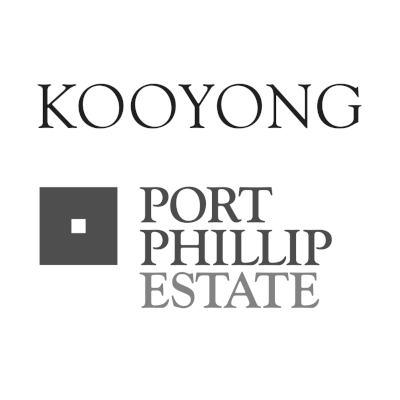
Media partners


Anonymous (1)
The Aranday Foundation
Alan and Mary-Louise Archibald Foundation Ballandry Peter Griffin Family Fund Foundations


The Jack & Hedy Brent Foundation
The Peggie Leslie Cranbourne Foundation
The Marian & E H Flack Trust
Gailey Lazarus Foundation
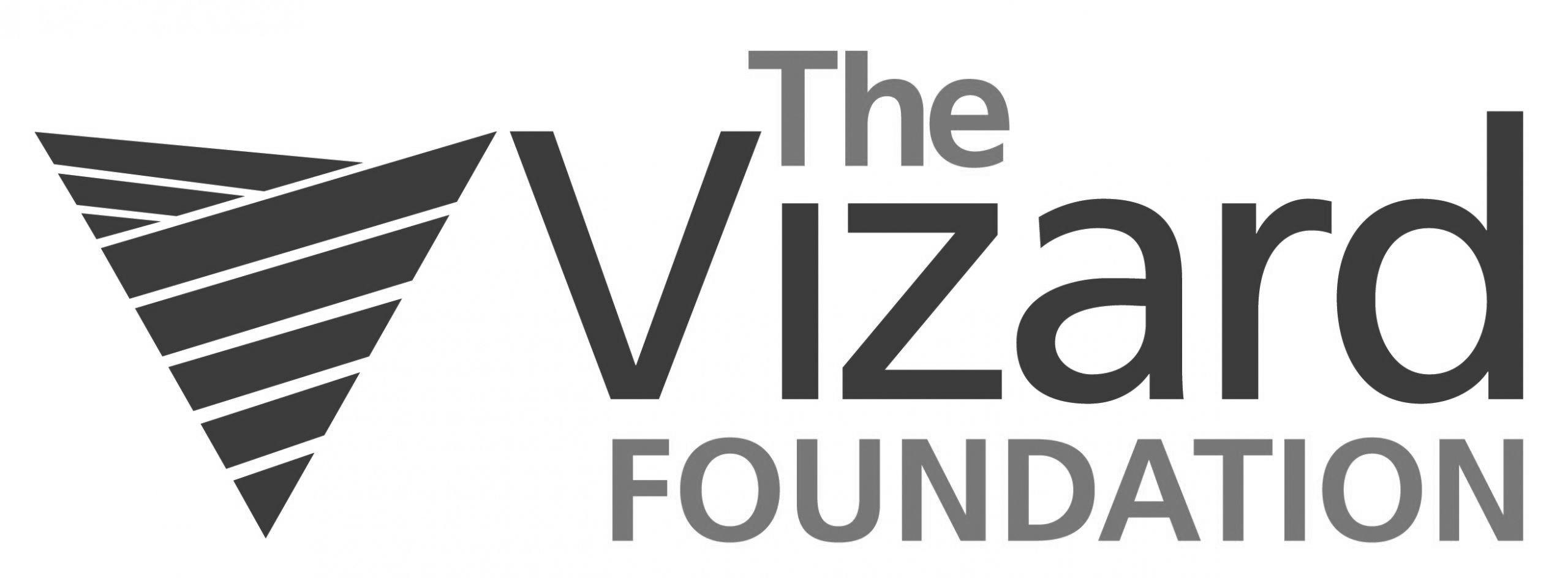

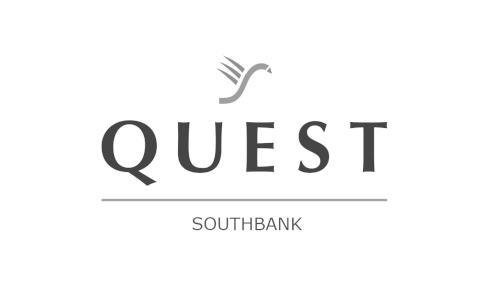


Margaret Lawrence Bequest The James & Leo Ostroburski Foundation
The Sentinel Foundation Sirius Foundation

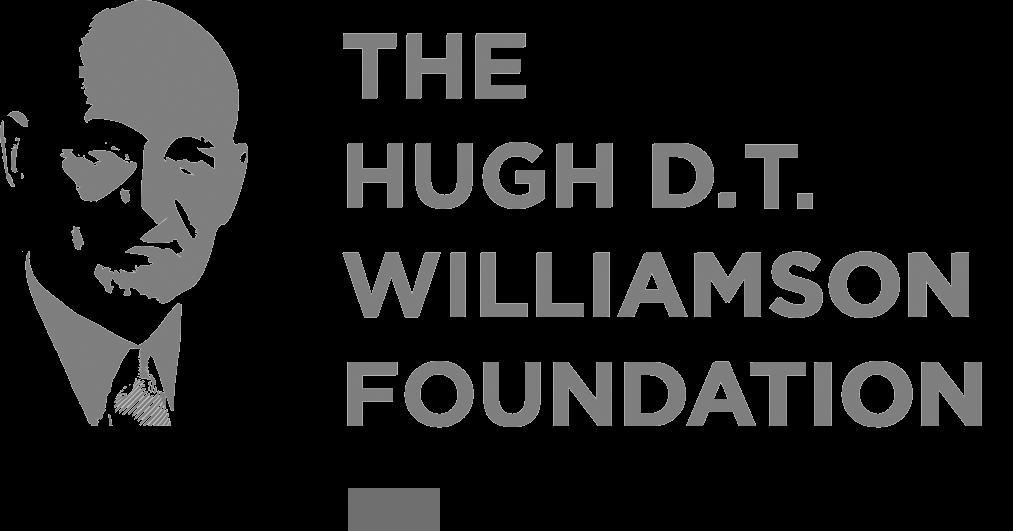


organisational structure
Minister for Creative Industries Colin Brooks MP
Board of Directors & Committee of Management Melbourne Recital Centre Secretary, Department of
Board Sub Committees Audit & Risk Committee Governance, Renumeration & Nominations Committee Foundation Advisory Committee
Our Board
Peter McMullin AM

Appointed 15 March 2021
Reappointed 4 March 2024
Appointed Chair 7 April 2025
Peter McMullin AM is the Chairman and Director of McMullin Group. He is also President of the Confederation of AsiaPacific Chambers of Commerce & Industry, Vice-Chair of the ICC World Chambers Federation for South-East Asia & Oceania, Honorary Consul of Georgia in Victoria, Special Counsel at Cornwalls Lawyers, Founder and Chair of The Good Business Foundation, and Board Director of the Australian Chamber Orchestra.
Andrew Apostola

Appointed 16 October 2023
Andrew Apostola is the Chief Executive Officer and co-founder of Portable, innovation partners for public good based in Melbourne. Andrew is a thought leader in creating positive social change through ethical and innovative design and technology. He holds an MBA from The University of Melbourne and a PostGraduate Diploma in English Literature.
Anthony Cavanagh

Appointed 12 August 2024
Anthony Cavanagh is a Taungurung man from Victoria and has been the Chief Executive Officer of Ganbina since 2013. He is a past member of the ANZ Bank’s Indigenous Advisory Council, an alumnus of the Williamson Leadership program, the Melbourne Business School’s MURRA Indigenous Business program, and has also studied at Stanford Business School in the United States. Anthony is a past Director of Philanthropy Australia. In addition to his leadership and governance roles, Anthony holds a Graduate Certificate in Indigenous Business Leadership from The University of Melbourne and is a Certified Community Director.
Kate Duncan

Appointed 12 August 2024
Kate Duncan is the Chief Executive Officer of Australian youth music organisation The Push. Leading the organisation, Kate oversees the strategic direction, focusing on giving every young person the opportunity to participate and thrive in Australian music. Prior to The Push, Kate spent several years in local government developing a range of award-winning youth music programs, as well as within the Victorian Government managing the National Youth Week grants program. Kate is a scholarship recipient of Melbourne Business School’s ForPurpose Executive Leadership program. She is a member of the Victorian Arts Industry Council and a previous member of the ABC Advisory Council.
Assoc. Professor Jody Evans
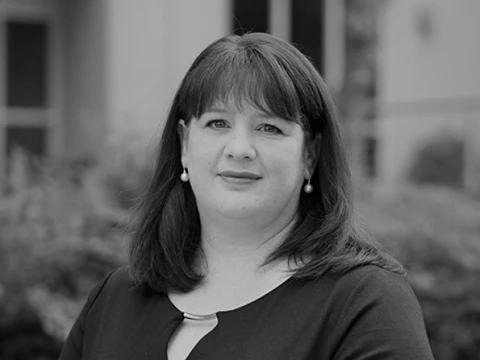
Appointed 25 June 2018
Reappointed 15 March 2021 and 4 March 2024
Dr Jody Evans is an Associate Professor of Marketing at Melbourne Business School, where she specialises in leadership, stakeholder engagement and strategic storytelling for purpose-driven organisations. With a career spanning over 25 years, she has helped shape initiatives that build community, attract support and amplify impact across the arts, education and social sectors. Jody has led nationally recognised programs supporting women in leadership and is actively involved in philanthropy and Board governance. Her previous Board roles include the Shepparton Art Museum Foundation and the Public Galleries Association of Victoria. She is currently Chair of the Foundation Advisory Committee at Melbourne Recital Centre.

Appointed 12 August 2024
Mark Freeman is the Managing Director of the Australian Foundation Investment Company, which is Australia’s largest listed investment company. It manages Djerriwarrh Investments Limited, Mirrabooka Investments Limited and AMCIL Limited. Mark started his career as an investment analyst at JBWere in 1994 where he advised Australian Foundation Investment Company, Djerriwarrh Investments Limited, Mirrabooka Investments Limited and AMCIL Limited on their investment and dealing activities. He was admitted as a Partner of Goldman Sachs JBWere in 2001. In 2007, he joined the four investment companies as the Chief Investment Officer and was appointed as Managing Director of the companies in 2018. Mark is currently a Board Member of the Mannix College Foundation.
Mark
Freeman

Appointed 3 March 2020
Reappointed 3 March 2023
Liz Grainger is a chartered accountant and a graduate member of the Australian Institute of Company Directors. She provides consultancy services to a wide range of public and not-for-profit organisations in the areas of strategy, governance, public sector funding and financial management. She has held executive roles at Deloitte in London and in the federal and Victorian public sectors. Liz is a former Board Member of Craft Victoria and Arena Theatre Company, and is currently a Director of VicScreen, Geografia and The Mission to Seafarers Victoria Inc. She has also served as an external member on the Audit and Risk Committees of Victoria Police, Southern Metropolitan Cemeteries Trust and Film Victoria, and currently serves in this capacity for Energy Safe Victoria.

Appointed 15 March 2021
Reappointed 4 March 2024
Monica Lim is a sound artist and composer whose work spans installations, performance art, contemporary dance and new instrument-making. Monica has completed her PhD at The University of Melbourne in interactive composition, with research interests in movement-led composition, new interfaces for musical expression and creative AI. She is a cofounder of philanthropic organisation Project Eleven.
Monica
Lim
Liz
Grainger
retired board directors
The MaryHonourable Delahunty

Appointed 1 July 2016
Reappointed 18 March 2019 and 3 March 2022
Retired 2 March 2025
The Honourable Mary Delahunty is a non-executive Board Member of the McClelland Sculpture Park and Gallery; a non-executive Board Member of the National Library of Australia; a graduate of the Australian Institute of Company Directors; a former Minister for the Arts, Victoria Government; a former Minister for Planning, Victorian Government; a former Minister for Education, Victorian Government; a non-executive Board Member of The Centre for Advancing Journalism at The University of Melbourne; a former interviewer and presenter on ABC’s The 7.30 Report and Four Corners; and a Gold Walkley winner for international reporting.
Professor Emeritus Andrea Hull AO

works projects and fundraising campaigns. Professor Hull has made a significant contribution to Victoria’s cultural landscape and Melbourne’s Arts Precinct. A former Chair of the ABC Advisory Council, Professor Hull has held Board positions across the breadth of Australia’s cultural and not-for-profit sectors, including at the Florey Institute, the National Museum of Australia, the Breast Cancer Network of Australia, and the Melbourne Forum. She is Professor Emeritus of The University of Melbourne and consults widely on problem-solving, cultural management and executive coaching.
Charlena Chan
Retired December 2024
Our committees
as at june 2025



Board Committees
The Board has established several standing committees. Decisions made by these committees become recommendations for consideration by the Board. These committees are the: Audit and Risk Committee Governance, Remuneration and Nominations Committee Committee of Management, Melbourne Recital Centre Foundation Advisory Committee Executive Committee.
Committee of Management Melbourne Recital Centre
On 23 October 2008, the Melbourne Recital Centre land at Southbank (Crown Allotment 2338, City of South Melbourne, Parish of Melbourne South) was reserved for public purposes (arts and recital centre). The Minister for the Environment and Climate Change appointed the Melbourne Recital Centre as the Committee of Management for that reserve with effect from that date. The Melbourne Recital Centre Committee of Management is the Board of Directors of Melbourne Recital Centre.
Financial and Other Information Retained by the Accountable Officer
Relevant information detailed in Financial Reporting Direction (FRD) 22 Standard Disclosures in the Report of Operations under section 3 of the Financial Management Act 1994 (Vic) is retained by the Company’s Accountable Officer. The items listed below are available to the relevant Ministers and Members of Parliament:
a statement that declarations of pecuniary interests have been duly completed by all relevant officers details of shares held by a senior officer as nominee or held beneficially in a statutory authority or subsidiary details of publications produced by the Melbourne Recital Centre about the activities of the Melbourne Recital Centre and where they can be obtained details of changes in prices, fees, charges, rates and levies charged by the Melbourne Recital Centre for its services, including services that are administered details of any major external reviews carried out in respect of the operation of the Melbourne Recital Centre details of any other research and development activities undertaken by the Melbourne Recital Centre that are not otherwise covered either in the report of operations or in a document that contains the financial statement and report of operations details of overseas visits undertaken including a summary of the objectives and outcomes of each visit details of major promotional, public relations and marketing activities undertaken by the Melbourne Recital Centre to develop community awareness of the services provided details of assessments and measures undertaken to improve the occupational health and safety of employees, not otherwise detailed in the report of operations a general statement on industrial relations within the Melbourne Recital Centre and details of time lost through industrial accidents and disputes, which are not otherwise detailed in the report of operations a list of major committees sponsored by the Melbourne Recital Centre, the purposes of each committee and the extent to which the purposes have been achieved, and details of all consultancies and contractors including consultants/contractors engaged, the services provided, and expenditure committed to for each engagement.
Audit and Risk Committee
Liz Grainger, Chair Mark Freeman Monica Lim Deirdre Blythe (external member) Kushal Shah (external member)
Governance, Remuneration and Nominations Committee
As at 30 June 2025, the Chair position of this committee remained vacant. Andrew Apostola Anthony Cavanagh Kate Duncan Peter McMullin AM
Committee of Management, Melbourne Recital Centre
Associate Professor Jody Evans Andrew Apostola Anthony Cavanagh Kate Duncan Liz Grainger Monica Lim Peter McMullin AM
Foundation Advisory Committee
Associate Professor Jody Evans, Chair Monica Lim
Peter McMullin AM
Peter Armstrong (external Member) Jim Cousins AO (external Member) Elisabeth Ee (external Member) Alex King (external Member) Clementine Lucas (external Member) Mairi Nicholson (external Member) Yvonne von Hartel (external Member)
Executive Committee
Peter McMullin AM, Chair
Associate Professor Jody Evans Liz Grainger
Our Executive Management
CHIEF EXECUTIVE OFFICER
Sandra Willis
Sandra Willis is an experienced arts executive with over 25 years of distinguished experience in cultural leadership across Australia’s leading performing arts organisations. Her senior positions include Executive Director of Opera Queensland and leadership roles with Opera Australia, Bell Shakespeare and Oz Opera, where she delivered major artistic programs, organisational strategies, and stakeholder engagement initiatives. Her career spans theatrical production, event and strategic management, and executive leadership across both arts and hospitality sectors. Sandra has held a number of Board positions for arts organisations and is currently an executive council member for the Association of Asia Pacific Performing Arts Centres. She is recognised for her commitment to artistic excellence, organisational sustainability, and broadening access to the arts for diverse communities.

Image credit: Laura Manariti

CHIEF OPERATING OFFICER

(from March 2025) Finance, People & Culture, Governance, Company Secretariat, Information Technology, Building Services, Commercial Management
DIRECTOR OF ENGAGEMENT & EXPERIENCE

Latoyah Forsyth Event and Brand Marketing, Communications, Audience Engagement and Development, Digital, CRM and Reporting, Ticketing Services, Visitor Experience, Front of House and Foyer Bars
HEAD OF OPERATIONS

van
Event and Production Management, Technical, Stage Door
HEAD OF DEVELOPMENT

DIRECTOR OF PROGRAMMING
Alistaire Bowler
Sponsorship, Philanthropy
Jasja
Andel
environmental performance
Melbourne Recital Centre maintains its commitment to environmental sustainability by minimising its environmental impacts and promoting a green future for our community. MRC continues to monitor and modify the behaviour of waste management, HVAC scheduling and building systems to improve its environmental performance.
Note: The above figures include usage by the Melbourne Recital Centre and café tenancy space occupied by Blondie Café. Waste comprises general, co-mingled, paper and cardboard.
financial summary
financial summary overview
The Five-Year Financial Summary presents Melbourne Recital Centre’s operating result for each year, before taking account of significant nonoperating items such as depreciation charges; donations and grants for capital purposes; and investment income reinvested to generate future growth in endowed funds.

In 2024–2025, the operating result was a small surplus, in line with expectations and reflecting MRC’s steady post-pandemic recovery and strong focus on the management of margins and overhead costs.
Pictured: Joep Beving (July 2024)
Credit: Laura Manariti
1. Income from the Victorian Government
Throughout the five-year period, the annual recurrent operating grant from the Victorian State Government has been supplemented by additional grants to fund the unavoidable costs of maintaining Melbourne Recital Centre’s core operations during the periods of pandemic-related closures, and the subsequent recovery. The need for this level of support has gradually decreased as audiences have returned, albeit slowly, to live performances.
2. Other operating income
While other operating income has increased over the last three years, it has yet to regain pre-pandemic levels. This responds to cost-of-living pressures and the broader shifts in audience behaviour that are being experienced across the whole live performance sector.
Within other operating income, MRC’s revenue from its commercial operations in 2024–2025 was in line with that for the previous year, with higher revenues from venue hire and other commercial operations (primarily food and beverage sales) compensating for a planned reduction in MRC’s own presenting activities.
3. Operating result before non-operating items
The 2024–2025 result reflects disciplined cost management and improved margins from commercial activities, notably MRC’s own presenting activities. These have partially compensated for the reduction in additional government support from the previous year.
4. Depreciation and similar charges
Depreciation is treated as non-operating expenditure as there is no expectation that Melbourne Recital Centre will have the financial capacity to fund the ongoing depreciation costs with respect to the building and building fit-out now recognised on its balance sheet (note 8). Funding for MRC’s capital additions is largely provided through the State Budget and the Cultural Facilities Maintenance Fund, managed by Creative Victoria (note 6).
5. Donations to the Public Fund Endowments
A proportion of the philanthropic income received by Melbourne Recital Centre funds operating requirements in the short to medium term, notably the delivery of the Community and Creative Engagement Programs. MRC also seeks to build the corpus of its endowments over time to generate an income stream through returns on invested funds. Donations added to the corpus are not included in the operating result for the purpose of this analysis.
6. Other income applied to capital purposes
In any year, Melbourne Recital Centre may receive funds from the Victorian Government and philanthropic sources, which are expended on property, plant and equipment. Government grants for capital purposes received prior to 1 July 2022 were included in the financial statements of the Victorian Government Department of Jobs, Skills, Industry and Regions (DJSIR) and are not shown here.
In 2024–2025, all funding from the Cultural Facilities Maintenance Fund (note 4) was recognised as contributed capital, and it is expected that this treatment will continue going forward.
7. Non distributable investment income
A proportion of the investment income generated each year is reinvested to strengthen the long-term growth of the endowments and is not available for operating purposes. In any year, this figure corresponds to the strategic allocation of investment assets and overall market performance.
8. Total net assets
The significant increase in reported total net assets between 2020–2021 and 2021–2022 is a result of the transfer of the land, building, and building fit-out, occupied and operated by Melbourne Recital Centre at 31 Sturt Street, to its own balance sheet, reflecting MRC’s substantive control and use of these assets.
The decrease in total net assets between 2023–2024 and 2024–2025 represents the comprehensive result for the year, notably the depreciation charge incurred on the transferred assets.
Statement Corporateof Governance


Manner of Establishment
Melbourne Recital Centre was registered on 2 March 2006 as a public company limited by guarantee with the sole shareholder being the State of Victoria, represented by the Minister for Creative Industries.
Melbourne Recital Centre is also a public entity under the Public Administration Act 2004 (Vic). Melbourne Recital Centre is registered as a charity with the Australian Charities and Not-for-profits Commission.
Melbourne Recital Centre has its own constitution and compliance and reporting requirements informed by both the Victorian Government policy and legislative frameworks as well as the Corporations Act 2001 (Cth). In abiding by the Code of Conduct for Directors of Victorian Public Entities, the Directors of Melbourne Recital Centre are committed to the highest standard of corporate and public sector governance.
Objectives of the Company
Powers and Duties of Directors
Under the Melbourne Recital Centre Constitution, Clause 2, the objectives of Melbourne Recital Centre include the promotion of live music, by, without limitation:
undertaking preparations for – and assisting in the funding of – the construction of Melbourne Recital Centre commissioning musical performances and programming for Melbourne Recital Centre promoting Melbourne Recital Centre, and planning and managing the operations of Melbourne Recital Centre.
Melbourne Recital Centre constitution, Clause 13.6:
The Directors are responsible for managing the Company’s business and affairs and may exercise to the exclusion of the Company in general meeting all the Company’s powers which are not required, by the Corporations Act 2001 (Cth) or by Melbourne Recital Centre’s constitution, to be exercised by the Company in general meeting.
The Directors may decide how cheques, promissory notes, bankers' drafts, bills of exchange or other negotiable instruments must be signed, drawn, accepted, endorsed or otherwise executed (as applicable) by or on behalf of the Company.
The Directors may pay out of the Company’s funds all expenses of promotion, formation and registration of the Company and the vesting in it of the assets acquired by it.
The Directors may: appoint or employ a person to be an officer, agent or attorney of the Company for the purposes, with the powers, discretions and duties (including powers, discretions and duties vested in or exercisable by the Directors) for the period and on the conditions they think fit authorise an officer, agent or attorney to delegate all or any of the powers, discretions and duties vested in the officer, agent or attorney, and subject to any contract between the Company and the relevant officer, agent or attorney, remove or dismiss any officer, agent or attorney at any time, with or without cause.
A power of attorney may contain any provisions for the protection and convenience of the attorney or persons dealing with the attorney that the Directors think fit.
The Company is committed to the implementation of the requirements of the competitive neutrality principles and is satisfied that its activities comply with the Victorian Government’s Competitive Neutrality Policy.
C
Public DisclosuresInterest Act
The Public Interest Disclosures Act 2012 (Vic) (the Act) encourages and assists people in making disclosures of improper conduct by public officers and public bodies. The Act provides protection to people who make disclosures in accordance with the Act and establishes a system for the matters disclosed to be investigated and rectifying action to be taken.
Melbourne Recital Centre does not tolerate improper conduct or serious misconduct by employees, nor the taking of reprisals against those who come forward to disclose such conduct. It is committed to ensuring transparency and accountability in its administrative and management practices and supports the making of disclosures that reveal corrupt conduct, conduct involving a substantial mismanagement of public resources, or conduct involving a substantial risk to public health and safety or the environment.
Melbourne Recital Centre will take all reasonable steps to protect people who make such disclosures from any detrimental action in reprisal for making the disclosure. It will also afford natural justice to the person who is the subject of the disclosure to the extent it is legally possible.
Melbourne Recital Centre is not eligible to receive public interest disclosures; however, disclosures of improper conduct or detrimental action relating to Melbourne Recital Centre can be made to the Independent Broad based Anti corruption Commission (IBAC). Further information about making disclosures to IBAC can be found at www.ibac.vic.gov.au.
As required by section 58(5) of the Act, Melbourne Recital Centre has made the Public Interest Disclosure Policy available on its website, melbournerecital.com.au. This policy provides procedures for protecting people who make protected disclosures from detrimental action by Melbourne Recital Centre or any member of its sta
In 2024 2025, Melbourne Recital Centre received no complaints or assessable disclosures as advised by IBAC.
Workplace Health Safety and
Melbourne Recital Centre has a Workplace Health and Safety (WHS) Committee that monitors, reviews and updates MRC’s occupational health and safety policies and procedures and reviews incidents reported at Melbourne Recital Centre. Several Key Performance Indicators have been identified to enable the measurement of WHS and provide a valuable tool in the management of these issues. Results for the year are outlined in the table below.
Compliance with the Building Act 1993 (Vic)
Melbourne Recital Centre is committed to being an inclusive organisation for employees, artists, audiences and communities.
We are proud to offer a workplace that embraces diversity and strongly encourages applications from Aboriginal and Torres Strait Islander peoples, members of the LGBTQIA+ community, people with disability, and individuals from culturally and linguistically diverse backgrounds.
Our Gender Equality Action Plan 2021 2025, our Disability, Access and Inclusion Plan, and Reconciliation Action Plan provide strategic guidance to support diverse talent and acknowledge the lived experiences that shape our workplace culture.
These Action Plans are actively supported by the Gender Equality, Diversity & Inclusion Initiative Working Group, which serves as a forum to plan and monitor the implementation of gender, diversity and inclusion initiatives across the arts sector.
In the 2024–2025 financial year, Melbourne Recital Centre made tangible progress, including:
improved gender balance across both front-of-house and back-of-house teams implemented initiatives to enhance venue accessibility for audiences and employees embedded accessibility features on our new website finalised our Reconciliation Action Plan.
As at 30 June 2025, Melbourne Recital Centre was responsible for one government-owned building located at 31 Sturt Street, Southbank Vic. 3006. Melbourne Recital Centre uses appropriately qualified consultants and contractors to ensure compliance with the building and maintenance provisions of the Building Act 1993 (Vic), Building Regulations 2018 and the National Contruction Code. Melbourne Recital Centre is responsible for maintaining assets as well as inspecting and auditing infrastructure and services (lighting, lifts, fire and ventilation facilities).
In 2024–2025, Melbourne Recital Centre reports on the following matters: Number of major works undertaken
Number of building permits, occupancy permits or certificates of final inspection issued
Number of emergency orders and building orders issued
Number of buildings that have been brought into conformity with building standards
Our people are at the heart of MRC. Melbourne Recital Centre recognises that their expertise, creativity and commitment make possible the extraordinary experiences we deliver and is dedicated to strengthening their capabilities and fostering a high-performing, accountable and values-driven culture that delivers exceptional outcomes for our community.
Staff members are appointed under ongoing, fixed term or casual contracts as per the Melbourne Recital Centre Enterprise Agreement 2021 and/or in accordance with the Public Entity Executive Remuneration Policy.
Employees have been correctly classified in workforce data collections as outlined in the table on the next page.
Public employmentsector principles and Victorian Public Sector Code of Conduct
All staff members are bound by the Code of Conduct for Victorian Public Sector Employees. Melbourne Recital Centre complies with the values (section 7) and the employment principles (section 8) of the Public Administration Act 2004 (Vic).
Melbourne Recital Centre is committed to applying merit and equity principles in appointments of staff members. Selection processes in place ensure that applicants are assessed and evaluated fairly and equitably based on the key selection criteria and other accountabilities, and without discrimination.
Melbourne Recital Centre is committed to having a balanced working environment where equal opportunity and diversity are valued.
There was no emergency procurement activated in 2024–2025.
In 2024–2025, there was no single government advertising campaign with total media spend of $100,000 or greater (exclusive of GST).
In 2024–2025, there were three consultancies where the total fees payable to the consultants were $10,000 or more. The total expenditure incurred during this period in relation to these consultancies is $78,115 (excluding GST). Details of the individual consultancies are outlined below.
In 2024–2025, there were four consultancies engaged during the year where the total fees payable to the individual consultancies was less than $10,000. The total expenditure incurred during 2024–2025 in relation to these consultancies was $12,499 (excluding GST).
No reviews or studies were undertaken in 2024–2025. Reviews and Studies Expenditure
Information and C Technologyommunication
Expenditure
For the 2024–2025 reporting period, Melbourne Recital Centre’s total information and communication technology (ICT) expenditure was $1,252,664, comprising the breakdown outlined below.
All Operational ICT Expenditure
Total Business as Usual (BAU) ICT Expenditure
ICT expenditure related to projects to create or enhance ICT capabilities
Total non-Business as Usual (non-BAU) ICT expenditure
Operational expenditure
ICT expenditure refers to Melbourne Recital Centre’s costs in providing business-enabling ICT services within the current reporting period. It comprises Business As Usual (BAU) ICT expenditure and Non-Business As Usual (Non-BAU) ICT expenditure. Non-BAU ICT expenditure relates to extending or enhancing current ICT capabilities. BAU ICT expenditure is all remaining ICT expenditure that primarily relates to ongoing activities to operate and maintain the current ICT capability.
Local Jobs First
The Asset Management Accountability Framework (Maturity Assessment)
The Local Jobs First Act 2003 (VIC) introduced in August 2018 brings together the Victorian Industry Participation Policy (VIPP) and the Major Project Skills Guarantee (MPSG) policy, which were previously administered separately.
During 2024–2025, Melbourne Recital Centre did not commence or complete any Local Jobs First Standard or Strategic projects.
The Asset Management Accountability Framework (AMAF) is a non-prescriptive, devolved accountability model of asset management that considers cradle-to-grave lifecycle review of assets. Melbourne Recital Centre assesses its maturity level as ‘Competent’ over each of the key stages of asset review including Leadership and Accountability; Planning; Acquisition; Operation and Disposal.
In 2024–2025, MRC did not run any grants programs. Grants

financial report
directors report
The Directors present this report on Melbourne Recital Centre for the financial year ended 30 June 2025.
Directors
Company Secretary
Membership of
RecitalMelbourneCentre
Principal Activities
Company Objectives
net results
The names of each person who has been a Director during the period and to the date of this report are:
Peter McMullin AM, Chair (Appointed 7 April 2025)
Professor Emeritus Andrea Hull AO, Chair (Term ended 2 March 2025)
Andrew Apostola
Anthony Cavanagh (Appointed 12 August 2024)
The Hon. Mary Delahunty (Term ended 2 March 2025)
Kate Duncan (Appointed 12 August 2024)
Associate Professor Jody Evans (Resigned 22 August 2025)
Mark Freeman (Appointed 12 August 2024)
Liz Grainger
Monica Lim
The Directors have been in office since 1 July 2024 to the date of this report unless otherwise stated. All directors are independent of the management.
Joanne Kuluveovski held the position of Company Secretary at the end of the financial year.
Melbourne Recital Centre (‘Centre’ or ‘Company’) is a Company limited by guarantee. The sole member of the Company is the Minister for Creative Industries, the Hon. Colin Brooks MP.
The principal activity of the Company during the financial year was planning and managing the operations of Melbourne Recital Centre.
The objectives of the Company include the promotion of live music, by, without limitation: undertaking preparations for and assisting in the funding of the construction of the Melbourne Recital Building; commissioning musical performances and programming for Melbourne Recital Centre; promoting Melbourne Recital Centre; and planning and managing the operations of Melbourne Recital Centre.
The net operating result from transactions, after depreciation and amortisation was a deficit of $3.3 million (2023-24: deficit of $3.3 million).
Excluding depreciation and amortisation, the net operating result from transactions was a surplus of $1.3 million (2023-24: surplus of $1.7 million). The previous year included additional Government grant support for operations and an exceptional donation. In the current year these have been partially compensated for by higher investment income, and robust cost management.
The total comprehensive result was a deficit of $2.7 million (2023-24: deficit of $2.7 million), after accounting for unrealised gains in the market value of the Company’s investments of $0.6 million (2023-24: $0.6 million).
Dividends Paid or Recommended
Operating Activities
Significant Changes in State of Affairs
Proceedings on Behalf of the Company
After
Balance Date Events
Future Developments
Environmental Regulations
In line with the Company’s constitution no part of the income or property was paid, transferred, or distributed, directly or indirectly, by way of dividend, bonus, or other profit distribution, to any of the members or directors during the financial year.
The Company continued to experience a steady recovery in its core operations with strong demand from venue hirers and an increase in income from other commercial activities including food and beverage sales. A planned reduction in the Company’s own presenting activities saw lower total revenues in this area, but improved margins. A strong focus on cost management across the organisation ensured that, overall, most non-employee expenses were kept at the level of the previous year, or generated savings.
There were no significant changes in the Company’s state of affairs during the year.
No person has applied for leave of Court to bring proceedings on behalf of the Company or intervene in any proceedings to which the Company is a party for the purpose of taking responsibility on behalf of the Company for all or any part of those proceedings. The Company was not a party to any such proceedings during the year.
As at the signing of this report, no matters or circumstances have arisen since the end of the financial year which significantly affected or may significantly affect the operations of the Company, the results of those operations, or the state of affairs of the Company in future financial years.
Next year marks the second year of the Company’s Strategic Plan 2025-28, a pivotal year in embedding the strategies developed in 2024-25 and advancing toward a robust business model which will ensure a financially sustainable future for Melbourne Recital Centre.
No significant environmental regulations apply that are likely to have a material effect on the operations or financial results of the Company.
During the financial year $7,108 ($6,182 in 2023-24) was paid by the Company to the Victorian Managed Insurance Authority for directors’ and officers’ liability insurance premiums and recorded as an expense in the comprehensive operating statement. The insurance provides cover for directors and officers of Melbourne Recital Centre against certain personal liabilities that they may incur by reason of their duties as directors and officers.
The lead auditor’s independence declaration for the year ended 30 June 2025 has been received and can be found on page 5 of the financial report.
This report is made in accordance with a resolution of directors, pursuant to section 298(2)(a) of the Corporations Act 2001. On behalf of the directors

Peter McMullin
AM Chair of the Board
Melbourne 9 September 2025
DECLARATION OF RESPONSIBLE BODY, CHIEF EXECUTIVE OFFICER, AND CHIEF FINANCIAL OFFICER
The attached financial statements for Melbourne Recital Centre have been prepared in accordance with Direction 5.2 of the Standing Directions of the Assistant Treasurer under the Financial Management Act 1994, applicable Financial Reporting Directions, Australian Accounting Standards including interpretations, the Australian Charities and Not-for-profits Commission Act 2012, the Australian Charities and Not-for-profits Commission Regulations 2022, and other mandatory professional reporting requirements.
We further state that, in our opinion, the information set out in the comprehensive operating statement, balance sheet, cash flow statement, statement of changes in equity, and accompanying notes, presents fairly the financial transactions during the year ended 30 June 2025 and financial position of the Company at 30 June 2025.
At the time of signing, there are reasonable grounds to believe that the Company is able to pay all of its debts, as and when they are due and payable, and we are not aware of any circumstance which would render any particulars included in the financial statements to be misleading or inaccurate.
We authorise the attached financial statements for issue on 9 September 2025.

Peter McMullin AM Chair of the Board
Melbourne 9 September 2025

Sandra Willis Chief Executive Officer
Melbourne 9 September 2025

Sharon Li Chief Operating Officer/ Chief Financial Officer
Melbourne 9 September 2025

MELBOURNE RECITAL CENTRE
OPERATING STATEMENT (a) FOR THE FINANCIAL YEAR ENDED 30 JUNE 2025
Other Economic Flows Other Comprehensive Income
Changes to asset revaluation reserve
Total other economic flows other comprehensive income
Comprehensive result
The accompanying notes form part of these financial statements.
Notes:
(a) This format is aligned to AASB 1049 Whole of Government and General Government Sector Financial Reporting. (b) ‘Gain/(loss) on disposal of fixed assets’ includes unrealised and realised gains/(losses) from revaluations, impairments, and disposals of all physical assets and intangible assets, except when these are taken through the asset revaluation surplus. (c) ‘Gain/(loss) on market value of investments’ includes unrealised and realised gains/(losses) from
disposals of investments, except when these are taken through the
at
through
and
MELBOURNE RECITAL CENTRE BALANCE
SHEET (a) AS AT 30 JUNE 2025
The accompanying notes form part of these financial statements.
Note: (a) This format is aligned to AASB 1049 Whole of Government and General Government Sector Financial Reporting. (b) Other non-financial assets include inventory and prepayments, which represent payments in advance of
extending beyond that financial accounting period.
MELBOURNE RECITAL CENTRE CASH FLOW STATEMENT (a) FOR THE FINANCIAL YEAR ENDED 30 JUNE 2025
The accompanying notes form part of these financial statements. Notes: (a) This format is aligned to AASB 1049 Whole of Government and General Government Sector Financial Reporting.
MELBOURNE RECITAL CENTRE STATEMENT OF CHANGES IN EQUITY FOR THE FINANCIAL YEAR ENDED 30 JUNE 2025
NOTES TO THE FINANCIAL STATEMENTS
NOTE 1: ABOUT THIS REPORT
Melbourne Recital Centre is an individual Company, incorporated and domiciled in Australia. The financial statements are presented in Australian dollars, the functional and presentation currency of Melbourne Recital Centre.
The Company is incorporated under the Corporations Act 2001 and is a Company limited by guarantee. If the Company is wound up, the constitution states that each member is required to contribute a maximum of $100 each towards meeting any outstanding obligations of the Company. At 30 June 2025 the sole member of the Company is the Minister for Creative Industries.
The registered office and principal place of business is:
Melbourne Recital Centre 31 Sturt Street Southbank 3006
Melbourne Recital Centre is a registered charity with the Australian Charities and Not-for-profits Commission and reports under the Financial Management Act 1994 and the Australian Charities and Not-for-profits Commission Act 2012.
The principal accounting policies adopted in the preparation of the financial statements are set out below. These policies have been consistently applied to all the years presented, unless otherwise stated.
1.1 Basis of preparation
These financial statements are Tier 2 general purpose financial statements prepared in accordance with AASB 1060 General Purpose Financial Statements – Simplified Disclosures for For-Profit and Not-for-Profit Tier 2 Entities (AASB 1060) and Financial Reporting Direction 101 Application of Tiers of Australian Accounting Standards (FRD 101).
Melbourne Recital Centre is a Tier 2 entity in accordance with FRD 101. These financial statements are the first general purpose financial statements prepared in accordance with Australian Accounting Standards – Simplified Disclosures. Melbourne Recital Centre’s prior year financial statements were general purpose financial statements prepared in accordance with Australian Accounting Standards (Tier 1). As Melbourne Recital Centre is not a ‘significant entity’ as defined in FRD 101, it was required to change from Tier 1 to Tier 2 reporting effective from 1 July 2024.
The financial statements are in Australian dollars and have been prepared under the historical cost convention, unless a different measurement basis is specially disclosed in the note associated with the item measured on a different basis.
The accrual basis of accounting has been applied in the preparation of these financial statements whereby assets, liabilities, equity, income, and expenses are recognised in the reporting period to which they relate, regardless of when cash is received or paid. The financial statements have been prepared on a going-concern basis.
Additions to net assets which have been designated as contributions by owners are recognised as contributed capital. Other transfers that are contributions to or distributions by owners have also been designated as contributions by owners.
Judgements, estimates, and assumptions are required to be made about financial information being presented. The significant judgements made in the preparation of these financial statements are disclosed in the notes where amounts affected by those judgements are disclosed. Estimates and associated assumptions are based on professional judgements derived from historical experience and various other factors that are believed to be reasonable under the circumstances. Actual results may differ from these estimates.
Revisions to accounting estimates are recognised in the period in which the estimate is revised and in future periods that are affected by the revision. Judgements and assumptions made by management in applying Australian Accounting Standards and Interpretations (AASs) that have significant effect on the financial statements and estimates are disclosed in the notes. Where appropriate, comparative figures have been amended to align with current presentation and disclosure.
The financial statements cover the Company as an individual reporting entity.
All amounts in the financial statements have been rounded to the nearest thousandth dollar unless otherwise stated.
1.2 Compliance information
These general-purpose financial statements have been prepared in accordance with the Financial Management Act 1994 (FMA), the Corporations Act 2001 and applicable Australian Accounting Standards (AASs), which include interpretations, issued by the Australian Accounting Standards Board (AASB) and the Australian Charities and Not-for-profits Commission Act 2012 (ACNC Act).
Where appropriate, those AASs paragraphs applicable to not-for-profit entities have been applied. Accounting policies selected and applied in these financial statements ensure that the resulting financial information satisfies the concepts of relevance and reliability, thereby ensuring that the substance of the underlying transactions or other events is reported.
The financial statements were authorised for issue by the Board of Directors on the date the declaration was signed.
NOTE 2: FUNDING DELIVERY OF OUR SERVICES
Introduction
The Company is a public entity and as such derives its funding from both Victorian State Government grants and self-generated sources such as philanthropy, trading activities and investments.
Structure
Summary of income that funds the delivery of our services
2.1 Victorian State Government grants
2.2 Commercial operations
2.3 Fundraising activities
2.4 Investment and other income
Summary of income that funds the delivery of our services
Revenue and income from transactions of the Company are accounted for consistently with the requirements of the relevant accounting standards, as described in the following notes. Where applicable, amounts disclosed as income are net of returns, allowances, duties, and taxes.
2.1
Grants recognised under AASB 1058 Income of Not for Profit entities
The Company has determined that grant income recognised under AASB 1058 has been earned under arrangements that are either not enforceable and/or linked to sufficiently specific performance obligations.
Income from grants without any sufficiently specific performance obligations, or that are not enforceable, is recognised when the Company has an unconditional right to receive cash which usually coincides with receipt of cash. On initial recognition of the asset, the Company recognises any related contributions by owners, increases in liabilities, decreases in assets, and revenue (‘related amounts’) in accordance with other Australian Accounting Standards.
Related amounts may take the form of:
(a) contributions by owners, in accordance with AASB 1004 Contributions;
(b) revenue or a contract liability arising from a contract with a customer, in accordance with AASB 15 Revenue from contracts with customers; (c) a financial instrument, in accordance with AASB 9 Financial instruments; or
(d) a provision, in accordance with AASB 137 Provisions, Contingent Liabilities and Contingent Assets.
Commercial operations included in the table above are transactions that the Company has determined to be classified as revenue from contracts with customers in accordance with AASB 15.
Venue hire comprises rental income for the use of the venue including the recovery of event production costs. Deposits relating to this activity are held as a contract liability under AASB 15 on the balance sheet until the performance obligations relating to the venue hire have occurred whereupon it is then recognised as revenue.
Artistic programming comprises ticket sales from events presented by Melbourne Recital Centre and is held as a contract liability under AASB 15 on the balance sheet until the performance obligations of the event has occurred whereupon it is then recognised as revenue.
Commercial activities comprise ticketing commissions, food and beverage income and the recovery of front of house event services. Income from these activities is recognised upon the provision of services to customers.
All donations, bequests and other non-reciprocal contributions are included in the Company’s revenue on receipt. Pledged donations are not recognised as income until received.
Sponsorships revenue is recognised on receipt as per AASB 1058, except where sufficiently specific performance obligations allow the income to be recognised over time, as governed by AASB 15.
2.4 Investment and Other income
Interest received includes interest receivable on bank deposits and other investments. Interest received is recognised using the effective interest method which allocates the interest over the relevant period.
Distributions receivable from managed investment funds is recognised when the right to receive payment is established in accordance with AASB 9. This distribution represents the income arising from the Centre’s investment of philanthropic funds in financial assets.
Unrealised gains and losses on the revaluation of investments do not form part of the income from transactions but are reported as unrealised gains and losses from other economic flows included in the net result as set out in note 8.1 to the financial statements.
NOTE 3: THE COST OF DELIVERING OUR SERVICES
Introduction
This section provides an account of the expenses incurred by the Company in delivering services and outputs. In Note 2, the funds that enable the provision of services are disclosed and in this note the cost associated with provision of services are disclosed.
Structure
3.1 Employee benefits
3.2 Supplies and consumables
3.3 Performance related expenses
3.4 Other operating expenses
Summary of expenses incurred in delivery of our services
Employee benefits
3.1.1 Employee benefits in the comprehensive operating statement
Employee benefit expenses include all costs related to employment including wages and salaries, employer superannuation contributions, fringe benefits tax, leave entitlements, Workcover premiums, learning and development, training costs and termination benefits.
Employees of the Company are entitled to receive defined superannuation benefits. Employer superannuation contributions comprise amounts paid or payable during the reporting year, in respect of members of defined contribution superannuation plans.
3.1.2 Employee-related Provisions
Provision is made for benefits accruing to employees in respect of wages and salaries, annual leave (AL), and long service leave (LSL) for services rendered to the reporting date and recorded as an expense during the period the services are delivered. Significant judgements are made in estimating the value of and classification of employee benefit provisions.
Historical trends of the Company are used to estimate the likely tenure of existing staff and expected timing of leave claims. In addition, judgements relating to wage inflation and future discount rates are required, for which the Company utilises rates released by the Department of Treasury and Finance. Significant judgements are made in estimating the value of and classification of employee benefit provisions.
Wages and salaries, annual leave, and sick leave
Liabilities for wages and salaries (including non-monetary benefits, annual leave, and on-costs) are recognised as part of the employee benefit provision as current liabilities, because the Company does not have an unconditional right to defer settlements of these liabilities.
These liabilities are recognised in the balance sheet at remuneration rates which are current at the reporting date. As the Company expects the liabilities to be wholly settled within 12 months of reporting date, they are measured at undiscounted amounts
The annual leave liability is classified as a current liability and measured at the undiscounted amount expected to be paid, as the Company does not have an unconditional right to defer settlement of the liability for at least 12 months after the end of the reporting period.
No provision has been made for sick leave as all sick leave is non-vesting and it is not considered probable that the average sick leave taken in the future will be greater than the benefits accrued in the future. As sick leave is non-vesting, an expense is recognised in the Statement of Comprehensive Income as it is taken.
Employment on-costs such as payroll tax, workers compensation and superannuation are not employee benefits. They are disclosed separately as a component of the provision for employee benefits when the employment to which they relate has occurred.
Long service leave (LSL) LSL is recognised in the provision for employee benefits.
Unconditional LSL is disclosed as a current liability; even where the Company does not expect to settle the liability within 12 months because it will not have the unconditional right to defer the settlement of the entitlement should an employee take leave within 12 months.
The components of this current LSL liability are measured at either:
Present value component that the Company does not expect to settle within 12 months; and
Nominal value component that the Company expects to settle within 12 months.
Conditional LSL is disclosed as a non-current liability. There is a conditional right to defer the settlement of the entitlement until the employee has completed the requisite years of service. This non-current LSL liability is measured at present value.
Any gain or loss following revaluation of the present value of non-current LSL liability is recognised as a transaction, except to the extent that a gain or loss arises due to changes in bond interest rates for which it is then recognised as an ‘other economic flow’ in the net result.
Supplies and consumables are recognised as a cost in the reporting period in which they are incurred.
3.3 Performance related expenses
related expenses
Performance related expenses relate to artist fees for Melbourne Recital Centre’s artistic programming events and production costs of all events held at Melbourne Recital Centre. These expenses are recognised in the reporting period in which they are incurred.
Other operating expenses represent the day-to-day running costs incurred in normal operations. The expenses are recognised in the reporting period in which they are incurred.
Services provided free of charge or for nominal consideration are only recognised when the value can be reliably determined, and the services would have been purchased if not donated.
Introduction
The Company controls infrastructure, investments and other assets that are utilised in fulfilling its objectives and conducting its activities. They represent the resources that have been entrusted to the Company for the delivery of these outputs.
Structure
4.1 Property, plant, and equipment
4.2 Intangible assets
4.3 Investments
4.4 Other non-financial assets
4.1 Property, Plant and Equipment
4.1.1 Carrying amount and accumulated depreciation
Initial recognition
All non-financial physical assets are measured initially at cost and subsequently revalued at fair value less accumulated depreciation and impairment losses. Where an asset is acquired for no or nominal cost, the cost is its fair value at the date of acquisition.
Subsequent valuation
Property, plant, and equipment (PPE) are subsequently measured at fair value less accumulated depreciation and impairment. Fair value is determined with regard to the asset’s highest and best use.
Specialised land and buildings
The market approach is also used for specialised land, although is adjusted for the community service obligation (CSO) to reflect the specialised nature of the land being valued.
The CSO adjustment reflects the valuer’s assessment of the impact of restrictions associated with an asset to the extent that is also equally applicable to market participants.
For the majority of Melbourne Recital Centre’s specialised buildings, the current replacement cost method is used, adjusting for the associated depreciation.
Musical instruments
Musical instruments are valued using the current replacement cost method, based on the cost to a market participant buyer to acquire or construct a substitute asset of comparable utility, adjusted for obsolescence.
Cultural assets
Cultural assets (primarily works of art) are valued using the market approach, whereby assets are compared to recent comparable sales or sales of comparable assets that are considered to have nominal value. Works of art, which are considered to have an indefinite life, are not depreciated.
Depreciation and amortisation are calculated on the straight-line method to write off the value of non-current physical assets (excluding Cultural assets) to its residual value over their expected useful life to the Company.
The useful life for each class of depreciable assets is:
No depreciation is charged on freehold land.
The estimated useful lives, residual values and depreciation method are reviewed at the end of each annual reporting period, and adjustments made where appropriate. Where depreciation rates or methods are changed, the net written down value of the asset is depreciated from the date of the change in accordance with the new depreciation rate or method. Depreciation recognised in prior financial years shall not be changed, that is, the change in depreciation rate or method shall be accounted for on a prospective basis.
Impairment
The recoverable amount of primarily non-cash-generating assets of not-for-profit entities, which are typically specialised in nature and held for continuing use of their service capacity, is expected to be materially the same as fair value determined under AASB 13 Fair Value Measurement, with the consequence that AASB 136 Impairment of assets does not apply to such assets that are regularly revalued.
Valuation of assets
The Company’s cultural assets were independently valued by independent specialist valuers as at 30 June 2025.
Fair value for plant and equipment that are specialised in use (such that it is rarely sold other than as part of a going concern), is determined using the current replacement cost method.
Refer to Note 7.3 for additional information on fair value determination of property, plant, and equipment.
A fair value assessment was carried out at 30 June 2025 for land and buildings, cultural assets and musical instruments. As movements in carrying amounts were not material (less than or equal to 10 per cent) a full revaluation was not required. The next scheduled full revaluation for this purpose group will be conducted in 2025-26.
4.2 Intangible assets
Initial recognition
Purchased intangible assets are initially recognised at cost. When the recognition criteria in AASB 138 Intangible Assets is met, internally generated intangible assets are recognised at cost. Subsequently, intangible assets with finite useful lives are carried at cost less accumulated amortisation and accumulated impairment losses. Amortisation begins when the asset is available for use, that is, when it is in the location and condition necessary for it to be capable of operating in the manner intended by management.
An internally generated intangible asset arising from development (or from the development phase of an internal project) is recognised if, and only if, all of the following are demonstrated:
(a) the technical feasibility of completing the intangible asset so that it will be available for use or sale;
(b) an intention to complete the intangible asset and use or sell it;
(c) the ability to use or sell the intangible asset;
(d) the intangible asset will generate probable future economic benefits;
(e) the availability of adequate technical, financial, and other resources to complete the development and to use or sell the intangible asset; and
(f) the ability to measure reliably the expenditure attributable to the intangible asset during its development.
Subsequent measurement
Intangible produced assets with finite useful lives, are amortised as an 'expense from transactions' on a straight-line basis over five years.
Impairment of intangible assets
Intangible assets with indefinite useful lives (and intangible assets not yet available for use) are tested annually for impairment and whenever there is an indication that the asset may be impaired. Intangible assets with finite useful lives are tested for impairment whenever an indication of impairment is identified.
The policy in connection with testing for impairment is outlined in section 7.3.
4.3 Investments
The investments are in funds managed by the Victorian Funds Management Corporation (VFMC). Investments are classified as being at fair value through profit and loss. Investments are recognised and derecognised on trade date and are initially recognised at fair value. Subsequent to initial recognition, they are measured at fair value with realised and unrealised gains and losses arising from changes in fair value, recognised in net result.
Ageing analysis of investments and other financial assets
No investments and financial assets as at 30 June 2025 and as at 30 June 2024 are considered to be past due or impaired.
NOTE 5: OTHER ASSETS AND LIABILITIES
Introduction
This section sets out assets and liabilities that arose from the Company’s operations.
Structure
5.1 Other assets
5.2 Other liabilities
5.1 Other Assets
5.1.1 Receivables
Contractual receivables are classified as financial instruments and categorised as financial assets at amortised costs. They are initially recognised at fair value plus any directly attributable transaction costs. The Company holds the contractual receivables with the objective to collect the contractual cash flows and therefore subsequently measured at amortised cost using the effective interest method, less any impairment.
Statutory receivables do not arise from contracts and are recognised and measured similarly to contractual receivables (except for impairment) but are not classified as financial instruments for disclosure purposes. The Company applies AASB 9 for initial measurement of the statutory receivables and as a result statutory receivable are initially recognised at fair value plus any directly attributable transaction costs.
5.1.2 Contract assets
Contract assets relate to the Company’s right to consideration in exchange for goods transferred to customers for services completed, but not yet billed at the reporting date.
The contract assets are transferred to receivables when the rights become unconditional, this usually occurs when the Company issues an invoice to the customer. The services are expected to be completed and invoiced early in the next financial year.
Contractual payables are classified as financial instruments and measured at amortised cost. Trade payables represent liabilities for goods and services provided to the Company prior to the end of the financial year that are unpaid.
Statutory payables are recognised and measured similarly to contractual payables but are not classified as financial instruments and are not included in the category of financial liabilities at amortised cost, because they do not arise from contracts.
5.2.2 Contract liabilities
Represented by:
Contract liabilities include consideration received in advance from customers in respect of performances. Income from venue hire deposits and ticket sales is recognised, or funds are passed to the presenter, after the relevant event has occurred.
5.2.3 Other liabilities
The Victorian State Government owns the Melbourne Recital Centre building in Southbank, however, the building is controlled by and recognised for accounting purposes in the financial statements of Melbourne Recital Centre. Following the transfer of buildings on 30 June 2024, capital funding provided by the Victorian Government in relation to the Cultural Facilities Maintenance Fund is designated as contributed capital from the owners, as set out in Note 8.2 to the Financial Statements.
Introduction
This section provides information on the sources of finance utilised by the Company during its operations and other information related to financing activities.
Structure
6.1 Cash flow information and balances 6.2 Commitments for expenditure
6.1. Cash flow information and balances
Cash and cash equivalents, comprise cash on hand and cash at bank, deposits at call and any highly liquid investments with an original maturity of three months or less, which are held for the purpose of meeting short-term cash commitments rather than for investment purposes, and which are readily convertible to known amounts of cash and are subject to an insignificant risk of changes in value.
For cash flow statement presentation purposes, cash and cash equivalents comprise the following:
The weighted-average interest rate of cash and cash equivalents was 4.32% in 2024-25 (2023-24: 4.63%). (a) Cash held in the box office bank account is held on behalf of the ticket purchaser and can only be made available to Melbourne Recital Centre after the relevant event has occurred. (b) See Note 8.2
6.2 Commitments for expenditure
Commitments for future expenditure include operating obligations arising from contracts. These commitments are recorded below at their nominal value and inclusive of GST. Where it is considered appropriate and provides additional relevant information to users, the net present values of significant individual projects are stated. These future expenditures cease to be disclosed as commitments once the related liabilities are recognised in the balance sheet.
6.2.1 Total commitments payable
These commitments are recorded below at their nominal value and inclusive of GST. These future expenditures cease to be disclosed as commitments once the related liabilities are recognised in the balance sheet.
Less GST recoverable from the Australian Taxation Office (165) (189)
Total
As at 30 June 2025, there are no capital commitments (2024: nil).
Introduction
The Company is exposed to risk from its activities and outside factors. In addition, it is often necessary to make judgements and estimates associated with recognition and measurement of items in the financial statements. This section sets out financial instrument specific information, (including exposures to financial risks) as well as those items that are contingent in nature or require a higher level of judgement to be applied, which for the Company related mainly to fair value determination.
Structure
7.1 Financial instruments specific disclosures 7.2 Contingent assets and contingent liabilities 7.3 Fair value determination
7.1 Financial instruments specific disclosures
Financial instruments arise out of contractual agreements that give rise to a financial asset of one entity and a financial liability or equity instrument of another entity. Due to the nature of the Company’s activities, certain financial assets and financial liabilities arise under statute rather than a contract (for example taxes, fines, and penalties). Such assets and liabilities do not meet the definition of financial instruments in AASB 132 Financial Instruments: Presentation.
The Company considers that the carrying amount of financial assets and liabilities recorded in the financial statements to be a fair approximation of their fair values.
Categories of financial assets
Financial assets at amortised cost
Financial assets at amortised cost include financial assets that meet both of the following criteria, and the assets are not designated as fair value through net result: the assets are held to collect the contractual cash flows; and the assets’ contractual terms give rise to cash flows that are solely payments of principal and interests.
These assets are initially recognised at fair value plus any directly attributable transaction costs and subsequently measured at amortised cost using the effective interest method less any impairment.
Melbourne Recital Centre recognises the following assets in this category: cash and deposits; and receivables (excluding statutory receivables).
Financial assets at fair value through net result include equity instruments that are held for trading as well as derivative instruments are classified as fair value through net result. Other financial assets are required to be measured at fair value through net result unless they are measured at amortised cost or fair value through other comprehensive income as explained above.
Melbourne Recital Centre recognises managed investment funds under this category.
Derecognition of financial assets
For cash and deposits, the Company applies the simplified approach to measure expected credit losses (ECL) based on the change in the ECLs over the life of the asset as required by AASB 9. Application of the lifetime ECL allowance method has resulted in no changes to the impairment loss allowances during the 2025 financial year (2024: nil).
Although not a financial asset, contract assets recognised applying AASB 15 (refer to Note 5.1.1) are also subject to impairment, however the material impairment is considered to be remote.
Categories of financial liabilities
Financial liabilities at amortised cost
Financial liabilities at amortised cost are initially recognised on the date they are originated. They are initially measured at fair value plus any directly attributable transaction costs. Subsequent to initial recognition, these financial instruments are measured at amortised cost with any difference between the initial recognised amount and the redemption value being recognised in profit and loss over the period of the interestbearing liability, using the effective interest rate method.
The Company recognises payables (excluding statutory payables) and other liabilities in this category.
7.2 Contingent assets and contingent liabilities
As at 30 June 2025 there are no contingent assets or contingent liabilities (2024: nil).
7.3 Fair value determination
This section sets out information on how the Company determined fair value for financial reporting purposes. Fair value is the price that would be received to sell an asset or paid to transfer a liability in an orderly transaction between market participants at the measurement date:
The following assets are carried at fair value financial assets and liabilities at fair value through operating result; property, plant and equipment; and cultural assets
The Company determines the policies and procedures for determining fair values for both financial and non-financial assets and liabilities as required.
Fair value hierarchy
In determining fair values, a number of inputs are used. To increase consistency and comparability in the financial statements, these inputs are categorised into three levels, also known as the fair value hierarchy, The levels are as follows:
Level 1 – quoted (unadjusted) market prices in active markets for identical assets or liabilities
Level 2 – valuation techniques for which the lowest level input that is significant to the fair value measurement is directly or indirectly observable
Level 3 – valuation techniques for which the lowest level input that is significant to the fair value measurement is unobservable.
The Company determines whether transfers have occurred between levels in the hierarchy by reassessing categorisation (based on the lowest level input that is significant to the fair value measurement as a whole) at the end of each reporting period.
The Valuer General Victoria (VGV) is the Company’s independent valuation agency (or) the Company, in conjunction with VGV, monitors changes in the fair value of each asset and liability through relevant data sources to determine whether revaluation is required.
How this section is structured
For those assets and liabilities for which fair values are determined, the following disclosures are provided:
Valuation techniques
Details of significant assumptions used in the fair value determination
7.3.1 Fair value determination: Non-financial physical assets
Valuation techniques and significant assumptions of non-financial physical assets measured at fair value AASB 2022-10 Amendments to Australian Accounting Standards – Fair Value Measurement of Non-Financial Assets of Not-for-Profit Public Sector Entities amended AASB 13 Fair Value Measurement by adding Appendix F Australian implementation guidance for not-for-profit public sector entities. Appendix F explains and illustrates the application of the principles in AASB 13 on developing unobservable inputs and the application of the cost approach. These clarifications are mandatorily applicable annul reporting periods beginning on or after 1 January 2024. FRD 103 permits Victorian public sector entities to apply Appendix F of AASB 13 in their next scheduled formal asset revaluation or interim revaluation process (whichever is earlier).
For all assets measured at fair value, The Company considers the current use is the highest and best use.
Specialised land and specialised buildings
The market approach is also used for specialised land, although it is adjusted for the community service obligation (CSO) to reflect the specialised nature of the land being valued.
The CSO adjustment reflects the valuer’s assessment of the impact of restrictions associated with an asset to the extent that is also equally applicable to market participants. This approach is in light of the highest and best use consideration required for fair value measurement and considers the use of the asset that is physically possible, legally permissible, and financially feasible. As adjustments of CSO are considered as significant unobservable inputs, specialised land would be classified as level 3 assets.
The specialised buildings are valued using the current replacement cost method. As the depreciation adjustments are considered as significant, unobservable inputs in nature, specialised buildings are classified as level 3 fair value measurements.
Cultural assets
Cultural assets represent works of art and are valued using the best estimate of the price reasonably obtainable in the market at reporting date. An independent valuation of cultural assets was performed by an independent specialist at 30 June 2025 and no valuation adjustments took place. The valuation method compared recent prices for similar items. Factors considered include age, condition, significance of work and importance of the artists associated with the works.
To the extent that these assets do not contain significant, unobservable adjustments, these assets are classified as Level 2 under the market approach. The effective date of the valuation of the cultural assets is 30 June 2025.
Musical instruments
Musical instruments include those key instruments that are used for daily performances in the Centre. They were valued using the replacement costs of assets the same age and condition. These assets were valued at 30 June 2025 by independent specialists and no valuation adjustments took place.
Other asset classes
All other asset classes are held at fair value. As the assets included in these asset classes are considered specialised in use, such that they are rarely sold, fair value is determined using the current replacement cost method. For all assets measured at fair value, the current use is considered the highest and best use. There were no changes in valuation techniques throughout the period to 30 June 2025.
2024 and 2025 Valuation technique Significant unobservable inputs Range (weighted average)
Specialised land Market approach
Specialised buildings Current replacement cost
Specialised building fit-out Current replacement cost
Community service obligation (CSO) adjustment
Direct cost per square metre
Useful life of specialised buildings
Direct cost per square metre
Useful life of specialised buildings
50-70 per cent (60 per cent)
$1,000-$1,500/m² ($1,300)
10-50 years (30 years)
$1,000-$1,500/m² ($1,300) 10-30 years (20 years)
Sensitivity of fair value measurement to changes in significant unobservable inputs
A significant increase or decrease in the CSO adjustment would result in a significantly lower (higher) fair value.
A significant increase or decrease in direct cost per square metre adjustment would result in a significantly higher or lower fair value.
A significant increase or decrease in the estimated useful life of the asset would result in a significantly higher or lower valuation.
A significant increase or decrease in direct cost per square metre adjustment would result in a significantly higher or lower fair value.
A significant increase or decrease in the estimated useful life of the asset would result in a significantly higher or lower valuation.
Venue furniture and equipment Current replacement cost
Cost per unit
Useful life of plant and equipment
Office furniture and equipment
Current replacement cost
Musical instruments
Current replacement cost
Cost per unit
Useful life of plant and equipment
Cost per unit
Useful life of plant and equipment
$2,000-$56,000 per unit ($7,100 per unit)
4 20 years (8 years)
$2,000-$56,000 per unit ($7,100 per unit)
3-20 years (8 years)
$2,000-$56,000 per unit
($7,100 per unit)
10-20 years (15 years)
Significant unobservable inputs have remained unchanged since June 2024.
A significant increase or decrease in cost per unit would result in a significantly higher or lower fair value.
A significant increase or decrease in the estimated useful life of the asset would result in a significantly higher or lower valuation.
A significant increase or decrease in cost per unit would result in a significantly higher or lower fair value.
A significant increase or decrease in the estimated useful life of the asset would result in a significantly higher or lower valuation.
A significant increase or decrease in cost per unit would result in a significantly higher or lower fair value.
A significant increase or decrease in the estimated useful life of the asset would result in a significantly higher or lower valuation.
Introduction
This section includes additional material disclosures required by accounting standards or otherwise, for the understanding of this financial report.
Structure
8.1 Other economic flows included in net result 8.2 Equity
8.3 Responsible persons
8.4 Remuneration of executive equivalents
8.5 Related parties
8.6 Remuneration of auditors
8.7 Subsequent events
8.1 Other economic flows included in net result Other economic flows are changes in volume or value of an asset or liability that do not result from transactions.
Net gain/(loss) on disposal of property plant and equipment (9)
Net gain/(loss) arising from revaluation of financial assets at fair value through net result (a)
Net gain/(loss) arising from revaluation of long service liability (b)
(a) Revaluation of financial assets reclassified at fair value through net result as per AASB 9
(b) Revaluation gain/(loss) due to changes in bond rates.
8.2 Equity
Included in the accounts of the Company are the results and assets and liabilities of the Public Fund.
The Company’s constitution establishes a Public Fund to receive all gifts of money and property for object of the Company. The Company must maintain a separate bank account into which all donations of cash and all proceeds derived from, including interest, income or money, or the realisation of property, is paid. The Public Fund is only used to further the Company’s objectives. In the event of the winding up of the Public Fund, or the Public Fund ceasing to be on the Register of Cultural Organisations, or the Company ceasing to be endorsed as a deductible gift recipient, any surplus of assets of the Public Fund must be transferred to another Public Fund, which is charitable at law; where gifts can be deducted under Subdivision 30-B due to it being listed on the Register of Cultural Organisations, as the members of the Company decide.
8.3 Responsible persons
In accordance with the Ministerial Directions issued by the Minister for Finance under the Financial Management Act 1994 the following disclosures are made regarding responsible persons for the reporting period.
Responsible Minister
The Hon. Colin Brooks MP, Minister for Creative Industries.
Responsible Persons
Peter McMullin AM, Chair (Appointed as Chair 07 April 2025)
Professor Emeritus Andrea Hull AO, Chair (Term ended 02 March 2025)
Andrew Apostola
Andrew Cavanagh (Appointed 12 August 2024)
The Hon. Mary Delahunty (Term ended 02 March 2025)
Kate Duncan (Appointed 12 August 2024)
Associate Professor Jody Evans (Resigned 22 August 2025)
Mark Freeman (Appointed 12 August 2024) Liz Grainger
Monica Lim
Amounts relating to the Ministers remuneration are reported in the State s Annual Financial Report. All Directors are appointed by the Minister for Creative Industries and all served throughout the year and to the date of this report, unless otherwise stated in the above table. They do not receive remuneration for services provided in their role as board members.
Accountable Officer
Sandra Willis (CEO)
The Remuneration received or receivable by the Accountable Officer in connection with the management of the Company during the reporting period was in the range of $300,000 $309,999 (2024: $290,000 $299,999).
8.4 Remuneration of executive equivalents
The Accountable Officer is the only executive officer. The number of equivalents, and their total remuneration during the reporting period are shown in the table below. Total annualised employee equivalents provide a measure of full time equivalent executive equivalents over the reporting period.
Remuneration comprises employee benefits (as defined in AASB 119 Employee Benefits) in all forms of consideration paid, payable or provided by the entity, or on behalf of the entity, in exchange for services rendered. Accordingly, remuneration is determined on an accrual basis and is disclosed in the following categories.
Remuneration of executive equivalents
(a)
(AEE) (b)
(a) The total number of senior executive service members includes persons who meet the definition of Key Management Personnel (KMP) of the entity under AASB 124 Related Party Disclosures and are also reported within the related parties note disclosure (Note 8.4) (b) Annualised employee equivalent (AEE) is based on the time fraction worked during the financial year.
8.5 Related parties
Related parties of the Company include: all executives and executive equivalents and their close family members and personal business interests (controlled entities, joint ventures and entities they have significant influence over); all board directors and their close family members and personal business interests (controlled entities, joint ventures and entities they have significant influence over); all cabinet ministers and their close family members; and all departments and public sector entities that are controlled and consolidated into the whole of state consolidated financial statements.
All related party transactions have been entered into on an arm s length basis.
Significant transactions with Victorian State Government related entities In FY2025, the Centre received operating funding of $4.7 million (FY2024: $5.5 million) and capital funding of $0.9 million (FY2024:$0.2 million) from the State Government.
The Company has investments held with the VFMC.
Key management personnel Key management personnel (KMP) of the Company include responsible persons detailed in note 8.3, as well as executives defined in 8.4.
The compensation detailed below excludes the salaries and benefits the Portfolio Minister receives. The Minister’s remuneration and allowances is set by the Parliamentary Salaries and Superannuation Act 1968 and is reported within the State s Annual Financial Report. Board members do not receive remuneration for services provided.
Remuneration of key management personnel
Transactions and balances with key management personnel and other related parties During the year, key management personnel and their related parties made cash donations to an aggregate value of $59,000 (2024: $250,0000).
8.6 Remuneration of auditors
8.7 Subsequent events
No matters or circumstances have arisen since the end of the reporting period which significantly affected or may significantly affect the operations of the Company, the results of those operations, or the state of affairs of the Company in future financial years.


